Review on Corrosion in Electronic Packaging Trends of Collaborative between Academia–Industry
Abstract
:1. Introduction
2. Methodology
3. Result and Discussion
3.1. IEEE Search Engine
3.1.1. Publication Based on Keywords “Corrosion” and “Wire Bonding”
3.1.2. Publication Based on Keywords “Corrosion” and “Leadframe”
3.1.3. Publication Based on Keywords “Corrosion” and “Solder”
3.1.4. Publication Based on Collaborative Works
3.2. Scopus Search Engine
3.2.1. Publication Based on Keywords “Corrosion” and “Wire Bonding”
3.2.2. Publication Based on Keywords “Corrosion” and “Leadframe”
3.2.3. Publication Based on Keywords “Corrosion” and “Solder”
3.2.4. Publication Based on Collaborative Works
4. Conclusions
Author Contributions
Funding
Acknowledgments
Conflicts of Interest
References
- Tang, J.; Knobben, A.; Reinders, E.G.J.; Revenberg, C.T.A.; Schelen, J.B.J.; Beenakker, C.I.M. Microwave Induced Plasma decapsulation of thermally stressed multi-tier copper wire bonded IC packages. In Proceedings of the 2013 14th International Conference on Electronic Packaging Technology, Dalian, China, 11–14 August 2013; pp. 981–986. [Google Scholar]
- Tsai, C.-H.; Chuang, C.-H.; Tsai, H.-H.; Lee, J.-D.; Chang, D.; Lin, H.-J.; Chuang, T.-H. Materials characteristics of Ag-alloy wires and their applications in advanced packages. IEEE Trans. Compon. Packag. Manuf. Technol. 2016, 6, 298–305. [Google Scholar] [CrossRef]
- Chen, C.-H.; Lin, Y.-C.; Shih, Y.-T.; Chen, S.-C.; Tsai, C.-H.; Wang, S.-C.; Chuang, T.-H. Evaluation of corrosion resistance of Ag-alloy bonding wires for electronic packaging. IEEE Trans. Compon. Packag. Manuf. Technol. 2017, 8, 146–153. [Google Scholar] [CrossRef]
- Lim, M.J.Z.; Goroll, M.; Loh, H.G.; Chen, Z.; Tan, C.S. Methodology to determine high precision variation in the electrical resistance of copper wires due to corrosion. In Proceedings of the 2020 IEEE 22nd Electronics Packaging Technology Conference (EPTC), Singapore, 2–4 December 2020; pp. 162–167. [Google Scholar]
- Mathew, V.; Wikramanayake, E.; Chopin, S.F. Corrosion of Copper Wire bonded Packages by Chlorine Containing Foreign Particles. In Proceedings of the 2020 IEEE 70th Electronic Components and Technology Conference (ECTC), Orlando, FL, USA, 3–30 June 2020; pp. 504–511. [Google Scholar]
- Nemoto, S.; Maeda, T.; Miyajima, M.; Akaike, Y.; Kitagawa, K.; Ishii, H.; Shimamoto, H.; Kikuchi, K. Investigation of mechanism of corrosion resistance of Pd coated Cu wire joint by pseudo process. In Proceedings of the 2019 International Conference on Electronics Packaging (ICEP), Niigata, Japan, 17–20 April 2019; pp. 56–60. [Google Scholar]
- Kim, Y.-J.; Hah, J.; Moon, K.-S.; Wong, C.P. Reduction of Ag Corrosion Rate During Decapsulation of Ag Wire Bond Packages. In Proceedings of the 2019 IEEE 69th Electronic Components and Technology Conference (ECTC), Las Vegas, NV, USA, 28–31 May 2019; pp. 2359–2364. [Google Scholar]
- Klengel, R.; Klengel, S.; Schischka, J.; Stephan, T.; Petzold, M.; Eto, M.; Araki, N.; Yamada, T. Influence of Copper Wire Material Additive Elements to the Reliability of Wire Bonded Contacts. In Proceedings of the 2020 IEEE 70th Electronic Components and Technology Conference (ECTC), Orlando, FL, USA, 3–30 June 2020; pp. 774–781. [Google Scholar]
- Klengel, R.; Klengel, S.; Petzold, M.; Eto, M.; Araki, N.; Yamada, T. How Copper Wire Material Additive Elements Effect the Reliability of Wire Bonded Contacts in HAST testing. In Proceedings of the 2020 IEEE 8th Electronics System-Integration Technology Conference (ESTC), Tonsberg, Norway, 15–18 September 2020; pp. 1–7. [Google Scholar]
- Lorenz, G.; Naumann, F.; Klengel, R.; Klengel, S.; Petzold, M.; Eto, M.; Araki, N.; Yamada, T. Investigation of mechanical and microstructural properties of a new, corrosion resistant gold-palladium coated copper bond wire. In Proceedings of the 2019 22nd European Microelectronics and Packaging Conference & Exhibition (EMPC), Pisa, Italy, 16–19 September 2019; pp. 1–6. [Google Scholar]
- Klengel, S.; Klengel, R.; Schischka, J.; Stephan, T.; Petzold, M.; Eto, M.; Araki, N.; Yamada, T. A new reliable, corrosion resistant gold-palladium coated copper wire material. In Proceedings of the 2019 IEEE 69th Electronic Components and Technology Conference (ECTC), Las Vegas, NV, USA, 28–31 May 2019; pp. 175–182. [Google Scholar]
- Klengel, S.; Klengel, R.; Schischka, J.; Stephan, T.; Petzold, M.; Eto, M.; Araki, N.; Yamada, T. Influence of copper wire material to corrosion resistant packages and systems for high temperature applications. In Proceedings of the 2019 22nd European Microelectronics and Packaging Conference & Exhibition (EMPC), Pisa, Italy, 16–19 September 2019; pp. 1–8. [Google Scholar]
- Asokan, M.; Caperton, J.; Thompson, Z.; Chyan, O.; Chowdhury, M.; O’Connor, S.; Nguyen, L. Novel corrosion prevention treatments for Cu wire bonded device to improve bonding reliability. In Proceedings of the 2018 IEEE 68th Electronic Components and Technology Conference (ECTC), San Diego, CA, USA, 29 May–1 June 2018; pp. 139–143. [Google Scholar]
- Yazawa, K.; Parsons, M.; Jackson, A.; Chen, W.; Campbell, A.; Blendell, J.; Handwerker, C.; Su, P. An Evaluation of Effects of Molding Compound Properties on the Reliability of Ag Wire Bonded Components. In Proceedings of the 2017 IEEE 67th Electronic Components and Technology Conference (ECTC), Orlando, FL, USA, 30 May–2 June 2017; pp. 2231–2236. [Google Scholar]
- Jung, B.H.; Yu, B.K.; Kim, S.H.; Moon, J.T.; Hong, S.J. Effects of Pd distribution at free air ball in Pd coated Cu wire. In Proceedings of the 2017 IEEE 19th Electronics Packaging Technology Conference (EPTC), Singapore, 6–9 December 2017; pp. 1–5. [Google Scholar]
- Liu, D.; Chen, H.; Wu, J.; Then, E. Corrosion behavior of Cu-Al intermetallic compounds in copper wire bonding in chloride-containing accelerated humidity testing. In Proceedings of the 2016 IEEE 66th Electronic Components and Technology Conference (ECTC), Las Vegas, NV, USA, 31 May–3 June 2016; pp. 629–636. [Google Scholar]
- Fan, H.; Chow, W.W.; Lee, K.; Wong, F.; Chen, H.; Wu, J. Investigation of Cu wire neck crack under thermal cycling test. In Proceedings of the 2016 17th International Conference on Electronic Packaging Technology (ICEPT), Wuhan, China, 16–19 August 2016; pp. 1522–1525. [Google Scholar]
- Chen, G.-L.; Zhou, M.-B.; Zhang, L.; Lin, Y.-J.; Zhang, Y.-P.; Zhang, X.-P. Influence of the zinc-oxide/salt content in the aluminum soldering flux on interfacial microstructure and mechanical property of Sn-0.7 Cu/Al joints in assembling LED lighting components. In Proceedings of the 2016 17th International Conference on Electronic Packaging Technology (ICEPT), Wuhan, China, 16–19 August 2016; pp. 958–962. [Google Scholar]
- Lim, A.B.Y.; Neo, W.J.; Yauw, O.; Chylak, B.; Gan, C.L.; Chen, Z. Evaluation of the corrosion performance of Cu–Al intermetallic compounds and the effect of Pd addition. Microelectron. Reliab. 2016, 56, 155–161. [Google Scholar] [CrossRef]
- Li, X.; Li, M.; Qian, K.; Chiu, H. Influence of Au film thickness on surface morphology and properties of substrate with Ni/Au microcones. In Proceedings of the 2015 16th International Conference on Electronic Packaging Technology (ICEPT), Changsha, China, 11–14 August 2015; pp. 518–521. [Google Scholar]
- Chiu, Y.-T.; Chiang, T.-H.; Yang, P.-F.; Huang, L.; Hung, C.-P.; Uegaki, S.; Lin, K.-L. The corrosion behavior of Ag alloy wire bond on Al pad in molding compounds of various chlorine contents under biased-HAST. In Proceedings of the 2016 International Conference on Electronics Packaging (ICEP), Hokkaido, Japan, 20–22 April 2016; pp. 497–501. [Google Scholar]
- Chiu, Y.-T.; Chiang, T.-H.; Chen, Y.-F.; Yang, P.-F.; Huang, L.; Lin, K.-L. The corrosion performance of Cu alloy wire bond on Al pad in molding compounds of various chlorine contents under biased-HAST. In Proceedings of the 2014 IEEE 64th Electronic Components and Technology Conference (ECTC), Lake Buena Vista, FL, USA, 27–30 May 2014; pp. 419–424. [Google Scholar]
- Lall, P.; Zhang, Y.; Suhling, J.; Nguyen, L. 3-D Numerical Multiphysics Model for Cu-Al Wire Bond Corrosion. In Proceedings of the 2019 18th IEEE Intersociety Conference on Thermal and Thermomechanical Phenomena in Electronic Systems (ITherm), Las Vegas, NV, USA, 28–31 May 2019; pp. 83–89. [Google Scholar]
- Lall, P.; Luo, Y.; Nguyen, L. A Novel Numerical Multiphysics Framework for the Modeling of Cu-Al Wire Bond Corrosion under HAST Conditions. In Proceedings of the 2018 17th IEEE Intersociety Conference on Thermal and Thermomechanical Phenomena in Electronic Systems (ITherm), San Diego, CA, USA, 29 May–1 June 2018; pp. 1177–1185. [Google Scholar]
- Lall, P.; Luo, Y.; Nguyen, L. Numerical Multiphysics Model for Cu-Al Wire Bond Corrosion Subjected to Highly-Accelerated Stress Test. In Proceedings of the 2018 IEEE 68th Electronic Components and Technology Conference (ECTC), San Diego, CA, USA, 29 May–1 June 2018; pp. 1628–1638. [Google Scholar]
- Lall, P.; Luo, Y.; Nguyen, L. Package-level multiphysics simulation of Cu-Al WB corrosion under high temperature/humidity environmental conditions. In Proceedings of the 2017 16th IEEE Intersociety Conference on Thermal and Thermomechanical Phenomena in Electronic Systems (ITherm), Orlando, FL, USA, 30 May–2 June 2017; pp. 1176–1184. [Google Scholar]
- Lall, P.; Deshpande, S.; Luo, Y.; Nguyen, L. Model for Interaction of EMC Formulation with Operating Current and Reliability of Cu-Al Wirebonds Operating in Harsh Environments. In Proceedings of the 2017 IEEE 67th Electronic Components and Technology Conference (ECTC), Orlando, FL, USA, 30 May–2 June 2017; pp. 815–826. [Google Scholar]
- Lall, P.; Deshpande, S.; Nguyen, L.; Murtuza, M. Microstructural indicators for prognostication of copper–aluminum wire bond reliability under high-temperature storage and temperature humidity. IEEE Trans. Compon. Packag. Manuf. Technol. 2016, 6, 569–585. [Google Scholar] [CrossRef]
- Lall, P.; Luo, Y.; Nguyen, L. Multiphysics Life-Prediction Model Based on Measurements of Polarization Curves for Copper-Aluminum Intermetallics. In Proceedings of the 2016 IEEE 66th Electronic Components and Technology Conference (ECTC), Las Vegas, NV, USA, 31 May–3 June 2016; pp. 1027–1038. [Google Scholar]
- Lall, P.; Deshpande, S.; Nguyen, L.; Murtuza, M. Prognostic indicators for Cu-Al wirebond degradation under operation at elevated temperature and combined temperature humidity. In Proceedings of the 2014 International Conference on Prognostics and Health Management, Fort Worth, TX, USA, 29 September–2 October 2014; pp. 1–13. [Google Scholar]
- Lall, P.; Deshpande, S.; Nguyen, L.; Murtuza, M. Prognostication of copper-aluminum wirebond reliability under high temperature storage and temperature-humidity. In Proceedings of the 2014 IEEE 64th Electronic Components and Technology Conference (ECTC), Lake Buena Vista, FL, USA, 27–30 May 2014; pp. 1973–1985. [Google Scholar]
- Cheng, C.H.; Hsiao, H.L.; Chu, S.I.; Shieh, Y.Y.; Sun, C.Y.; Peng, C. Low cost silver alloy wire bonding with excellent reliability performance. In Proceedings of the 2013 IEEE 63rd Electronic Components and Technology Conference, Las Vegas, NV, USA, 28–31 May 2013; pp. 1569–1573. [Google Scholar]
- Chang, P.; Hsiao, H.L.; Cheng, C.H.; Chu, S.I.; Tai, H.W.; Shieh, Y.Y.; Sun, C.Y. Investigation of fluorine induced probe marker discoloration. In Proceedings of the 2013 IEEE 15th Electronics Packaging Technology Conference (EPTC 2013), Singapore, 11–13 December 2013; pp. 139–142. [Google Scholar]
- Gan, C.; Ng, E.K.; Chan, B.L.; Kwuanjai, T.; Jakarin, S.; Hashim, U. Wearout reliability study of Cu and Au wires used in flash memory fine line BGA package. In Proceedings of the 2012 7th International Microsystems, Packaging, Assembly and Circuits Technology Conference (IMPACT), Taipei, Taiwan, 24–26 October 2012; pp. 232–235. [Google Scholar]
- Pu, H.; Lo, T.; Wang, T.; Wang, J. Investigation of palladium coverage on free air balls of palladium-coated copper wires. In Proceedings of the 2012 13th International Conference on Electronic Packaging Technology & High Density Packaging, Guilin, China, 13–16 August 2012; pp. 1110–1113. [Google Scholar]
- Koh, W.; Lee, T.-K.; Ng, H.-S.; Goh, K.-S.; Ho, H.-M. Investigation of palladium coverage on bonded balls of palladium-coated copper wires. In Proceedings of the 2011 12th International Conference on Electronic Packaging Technology and High Density Packaging, Shanghai, China, 8–11 August 2011; pp. 1–7. [Google Scholar]
- Cho, J.-S.; Yoo, K.-A.; Hong, S.-J.; Moon, J.-T.; Lee, Y.-J.; Han, W.; Park, H.; Ha, S.-W.; Son, S.-B.; Kang, S.-H. Pd effects on the reliability in the low cost Ag bonding wire. In Proceedings of the 2010 Proceedings 60th Electronic Components and Technology Conference (ECTC), Las Vegas, NV, USA, 1–4 June 2010; pp. 1541–1546. [Google Scholar]
- Boettcher, T.; Rother, M.; Liedtke, S.; Ullrich, M.; Bollmann, M.; Pinkernelle, A.; Gruber, D.; Funke, H.-J.; Kaiser, M.; Lee, K. On the intermetallic corrosion of Cu-Al wire bonds. In Proceedings of the 2010 12th Electronics Packaging Technology Conference, Singapore, 8–10 December 2010; pp. 585–590. [Google Scholar]
- Leng, E.P.; Song, P.Z.; Kheng, A.Y.; Yong, C.C.; Tu, A.T.; Arthur, J.; Downey, H.; Mathew, V.; Yin, C.Y. A study on fine pitch Au and Cu WB integrity vs. Ni thickness of Ni/Pd/Au bond pad on C90 low k wafer technology for high temperature automotive. In Proceedings of the 2010 34th IEEE/CPMT International Electronic Manufacturing Technology Symposium (IEMT), Melaka, Malaysia, 30 November–2 December 2010; pp. 1–7. [Google Scholar]
- Leng, E.P.; Song, P.Z.; Kheng, A.Y.; Yong, C.C.; Anh, T.T.; Arthur, J.; Downey, H.; Mathew, V.; Yin, C.Y. High temperature automotive application: A study on fine pitch Au and Cu WB integrity vs. Ni thickness of Ni/Pd/Au bond pad on C90 low k wafer technology. In Proceedings of the 2010 12th Electronics Packaging Technology Conference, Singapore, 8–10 December 2010; pp. 349–354. [Google Scholar]
- Lee, T.K.; Breach, C.D.; Chong, W.L. Comparsion of Au/Al and Cu/Al in wirebonding assembly and reliability. In Proceedings of the 2011 6th International Microsystems, Packaging, Assembly and Circuits Technology Conference (IMPACT), Taipei, Taiwan, 19–21 October 2011; pp. 234–237. [Google Scholar]
- Breach, C.D.; Shen, N.H.; Mun, T.W.; Lee, T.K.; Holliday, R. Effects of moisture on reliability of gold and copper ball bonds. In Proceedings of the 2010 12th Electronics Packaging Technology Conference, Singapore, 8–10 December 2010; pp. 44–51. [Google Scholar]
- Cheng, Y.; Ma, X.; Xu, B.; Liu, F.; Liang, Z.; Chen, B.; Li, S.; Mo, H.; Zhong, Z.; Wang, H. Flexible connection for reflow free super fine pitch QFP SMT components. In Proceedings of the 2017 18th International Conference on Electronic Packaging Technology (ICEPT), Harbin, China, 16–19 August 2017; pp. 539–543. [Google Scholar]
- Leping, Z.; Shanshan, H.; Baoshuai, W.; Neng, M.; Ruoqian, L.; Xia, X. Electrochemical corrosion in electric energy meters. In Proceedings of the 2019 14th IEEE International Conference on Electronic Measurement & Instruments (ICEMI), Changsha, China, 1–3 November 2019; pp. 923–929. [Google Scholar]
- Gupte, O.; Teoh, K.; Tummala, R.; Murtagian, G.; Smet, V. Innovative socketable and surface-mountable BGA interconnections. In Proceedings of the 2019 IEEE 69th Electronic Components and Technology Conference (ECTC), Las Vegas, NV, USA, 28–31 May 2019; pp. 1028–1034. [Google Scholar]
- Wang, J.; Chen, G.; Forbes, H.; Christopoulos, K.; Liu, C.; Sun, L.; Shang, P. An investigation into the effect of dry bake on the solderability degradation of electrodeposited tin finishes. In Proceedings of the 2017 18th International Conference on Electronic Packaging Technology (ICEPT), Harbin, China, 16–19 August 2017; pp. 366–371. [Google Scholar]
- Ndieguene, A.; Albert, P.; Fortin, C.; Oberson, V.; Sylvestre, J. Eternal Packages: Liquid Metal Flip Chip Devices. In Proceedings of the 2016 IEEE 66th Electronic Components and Technology Conference (ECTC), Las Vegas, NV, USA, 31 May–3 June 2016; pp. 580–587. [Google Scholar]
- Peng, J.-W.; Chen, Y.-S.; Chen, Y.; Liang, J.-L.; Lin, K.-L.; Lee, Y.-L. Removed organic solderability preservative (OSPs) by Ar/O 2 microwave plasma to improve solder joint in thermal compression flip chip bonding. In Proceedings of the 2014 IEEE 64th Electronic Components and Technology Conference (ECTC), Lake Buena Vista, FL, USA, 27–30 May 2014; pp. 1584–1589. [Google Scholar]
- Meier, K.; Roellig, M.; Schiessl, A.; Wolter, K.-J. Reliability study on chip capacitor solder joints under thermo-mechanical and vibration loading. In Proceedings of the 2014 15th International Conference on Thermal, Mechanical and Mulit-Physics Simulation and Experiments in Microelectronics and Microsystems (EuroSimE), Ghent, Belgium, 7–9 April 2014; pp. 1–7. [Google Scholar]
- Wu, H.; Liu, L.; Chen, X.; Kuang, X.; Lei, D. Failure analysis and case study of plastic encapsulated microelectronics. In Proceedings of the 2014 10th International Conference on Reliability, Maintainability and Safety (ICRMS), Guangzhou, China, 6–8 August 2014; pp. 70–73. [Google Scholar]
- Kwon, S.-H.; Kim, K.-H.; Seo, W.-I.; Park, N.-S.; Park, Y.-B.; Lee, C.-W.; Yoo, S. Solder joint properties of Sn-Ag-Cu solders on environmental-friendly plasma surface finish. In Proceedings of the 2013 IEEE 63rd Electronic Components and Technology Conference, Las Vegas, NV, USA, 28–31 May 2013; pp. 481–485. [Google Scholar]
- Bonyár, A.; Hurtony, T.; Dávid, S. Investigation of the oxidation process at the copper-solder interface with atomic force microscopy. In Proceedings of the 2012 IEEE 18th International Symposium for Design and Technology in Electronic Packaging (SIITME), Alba Iulia, Romania, 25–28 October 2012; pp. 317–320. [Google Scholar]
- Xu, D.; Li, X.; Wang, C.; Xu, B. Study on wettability and corrosivity of a new no-clean flux for lead-free solder paste in electronic packaging technology. In Proceedings of the 2011 Second International Conference on Mechanic Automation and Control Engineering, Inner Mongolia, China, 15–17 July 2011; pp. 1706–1708. [Google Scholar]
- Wang, J.; Yuan, Z.; Guo, L.; Xiong, L.; Zhang, Y.; Peng, C.; Li, X.; Liu, X. Packaging of high power semiconductor laser arrays using a novel macro-channel cooler. In Proceedings of the 2010 11th International Conference on Electronic Packaging Technology & High Density Packaging, Xi’an, China, 16–19 August 2010; pp. 92–97. [Google Scholar]
- Yu, Y.; Man, M.; Zhao, F.; Lin, S.; Guo, F. Corrosive degradation evaluation of semi-parallel wire cables with high-density polyethylene sheath breaks. Eng. Fail. Anal. 2020, 116, 104714. [Google Scholar] [CrossRef]
- Liu, C.-P.; Chang, S.-J.; Liu, Y.-F.; Su, J. Corrosion-induced degradation and its mechanism study of Cu-Al interface for Cu-wire bonding under HAST conditions. J. Alloy. Compd. 2020, 825, 154046. [Google Scholar] [CrossRef]
- Sawada, H.; Borisenko, K.B.; Shima, M.; Ikita, K.; Hashiguchi, H.; Onishi, I.; Okunishi, E.; Kirkland, A.I. Corrosion of Gold by a Nanoscale Gold and Copper Beltlike Structure. J. Phys. Chem. C 2019, 123, 19920–19926. [Google Scholar] [CrossRef]
- Kim, G.R.; Ha, S.-S.; Park, C.-H.; Pae, S.; Choi, B. The Bondability and Reliability of a Ternary Ag Alloy Wire on an Al Bonding Pad under N2-Free Conditions. Mater. Trans. 2018, 59, 1487–1492. [Google Scholar] [CrossRef] [Green Version]
- Zhang, H.; Hu, M.; Wang, Z.; He, Q.; Ye, D. BGA substrate outgassing negative impact study on Cu wire bonding. Microelectron. Int. 2017, 34. [Google Scholar] [CrossRef]
- Lim, A.B.Y.; Long, X.; Shen, L.; Chen, X.; Ramanujan, R.V.; Gan, C.L.; Chen, Z. Effect of palladium on the mechanical properties of Cu-Al intermetallic compounds. J. Alloy. Compd. 2015, 628, 107–112. [Google Scholar] [CrossRef]
- Lim, A.B.Y.; Chang, A.C.K.; Yauw, O.; Chylak, B.; Gan, C.L.; Chen, Z. Ultra-fine pitch palladium-coated copper wire bonding: Effect of bonding parameters. Microelectron. Reliab. 2014, 54, 2555–2563. [Google Scholar] [CrossRef]
- Huang, C.-K.; Lin, K.-W.; Huang, Y.-M.; Caparanga, A.R.; Leron, R.B.; Li, M.-H. Effect of thickness and phosphorus content on Au/Pd/Ni (P) metal finish of printed circuit board. J. Electron. Mater. 2013, 42, 2648–2657. [Google Scholar] [CrossRef]
- Chauhan, P.; Zhong, Z.W.; Pecht, M. Copper wire bonding concerns and best practices. J. Electron. Mater. 2013, 42, 2415–2434. [Google Scholar] [CrossRef]
- Goh, C.S.; Chong, W.L.E.; Lee, T.K.; Breach, C. Corrosion study and intermetallics formation in gold and copper wire bonding in microelectronics packaging. Crystals 2013, 3, 391–404. [Google Scholar] [CrossRef]
- Chyan, O.; Ross, N.; Asokan, M.; Lambert, A.; Berhe, S.; Chowdhury, M.; Connor, S.O.; Nguyen, L. Mechanistic Investigation and Prevention of Al Bond Pad Corrosion in Cu Wire-bonded Device Assembly. In Proceedings of the 2017 IEEE 67th Electronic Components and Technology Conference (ECTC), Orlando, FL, USA, 30 May–2 June 2017; pp. 1179–1186. [Google Scholar]
- Lall, P.; Deshpande, S.; Nguyen, L. High Temperature Storage and HAST Reliability of Copper-Aluminum Wirebond Interconnects. In Proceedings of the ASME International Mechanical Engineering Congress and Exposition; American Society of Mechanical Engineers, Montreal, QC, Canada, 14–20 November 2014; Volume 46590, p. V010T13A073. [Google Scholar]
- Lim, A.B.Y.; Chang, A.C.K.; Lee, C.X.; Yauw, O.; Chylak, B.; Chen, Z. Palladium-coated and bare copper wire study for ultra-fine pitch wire bonding. ECS Trans. 2013, 52, 717. [Google Scholar] [CrossRef]
- Singh, I.; Low, S.; Song, S.F.; Jung, C.S.; San, L.M.; Qin, I.; Huynh, C.; Clauberg, H.; Nguyen, S.T.; Chylak, B. Pd-coated Cu Wire Bonding Reliability Requirement for Device Design, Process Optimization and Testing. In Proceedings of the International Symposium on Microelectronics, Algiers, Algeria, 16–20 December 2012; International Microelectronics Assembly and Packaging Society: San Diego, CA, USA, 2012; Volume 2012, pp. 396–404. [Google Scholar]
- Lee, T.K.; Breach, C.D.; Chong, W.L.; Goh, C.S. Oxidation and corrosion of Au/Al and Cu/Al in wire bonding assembly. In Proceedings of the 2012 13th International Conference on Electronic Packaging Technology & High Density Packaging, Guilin, China, 13–16 August 2012; pp. 244–249. [Google Scholar]
- Omar, F.R.; Salleh, E.M.; Othman, N.K.; Ani, F.C.; Samsudin, Z. The morphology of Pb-free Sn-3.0 Ag-0.5 Cu solder reinforced by NiO nanoparticles. In Proceedings of the AIP Conference Proceedings, Leuven, Belgium, 8–10 April 2019; AIP Publishing LLC: Melville, NY, USA, 2019; Volume 2111, p. 30005. [Google Scholar]
- Othman, N.K.; Salleh, E.M.; Sarveswaran, C.; Che Ani, F. Effect of phosphorus and nickel on electrochemical migration of Sn-3Ag-0.7 Cu solder paste in simulated body fluid. In Solid State Phenomena; Trans Tech Publications: Stafa-Zurich, Switzerland, 2018; Volume 273, pp. 61–65. [Google Scholar]
- Othman, N.K.; Teng, K.Y.; Jalar, A.; Ani, F.C.; Samsudin, Z. Electrochemical migration behaviours of low silver content solder alloy SAC 0307 on printed circuit boards (PCBs) in NaCl solution. Mater. Sci. Forum 2016, 846, 3–12. [Google Scholar] [CrossRef]
- Sarveswaran, C.; Othman, N.K.; Ali, M.Y.T.; Ani, F.C.; Samsudin, Z. Investigation of electrochemical migration on Sn-0.7 Cu-0.3 Ag-0.03 P-0.005 Ni solder alloy in HNO3 solution. In Proceedings of the AIP Conference Proceedings, Selangor, Malaysia, 15–16 April 2015; AIP Publishing LLC: Selangor, Malaysia, 2015; Volume 1678, p. 40003. [Google Scholar]
- Sarveswaran, C.; Salleh, E.M.; Jalar, A.; Samsudin, Z.; Ali, M.Y.T.; Ani, F.C.; Othman, N.K. Investigation of corrosion on SAC 305, SAC 0307 and SAC 0307-0.03 P-0.005 Ni solder paste alloys in simulated body fluid (SBF). In Proceedings of the AIP Conference Proceedings, Selangor, Malaysia, 15–16 April 2015; AIP Publishing LLC: Selangor, Malaysia, 2017; Volume 1838. [Google Scholar]
- Nazeri, M.F.M.; Yahaya, M.Z.; Gursel, A.; Cheani, F.; Masri, M.N.; Mohamad, A.A. Corrosion characterization of Sn-Zn solder: A review. Solder. Surf. Mt. Technol. 2019, 31. [Google Scholar]
- Othman, N.K.; Omar, F.R.; Ani, F.C. Electrochemical migration and corrosion behaviours of SAC305 reinforced by NiO, Fe2O3, TiO2 nanoparticles in NaCl solution. In Proceedings of the IOP Conference Series: Materials Science and Engineering, Wuhan, China, 10–12 October 2019; IOP Publishing: Bristol, UK, 2019; Volume 701, p. 12044. [Google Scholar]
- Meyer, J.; Panchenko, I.; Wambera, L.; Bickel, S.; Wahrmund, W.; Wolf, M.J. Accelerated SLID bonding for fine-pitch interconnects with porous microstructure. In Proceedings of the 2017 IEEE 67th Electronic Components and Technology Conference (ECTC), Orlando, FL, USA, 30 May–2 June 2017; pp. 405–410. [Google Scholar]
- Braun, T.; Bauer, J.; Becker, K.-F.; Hölck, O.; Walter, H.; van Dijk, M.; Aschenbrenner, R.; Lang, K.-D. Influence of Humidity on reliability of Plastic Packages. In Proceedings of the 2015 European Microelectronics Packaging Conference (EMPC), Friedrichshafen, Germany, 14–16 September 2015; pp. 1–6. [Google Scholar]
- Medgyes, B.; Kósa, G.; Tamási, P.; Szabó, B.; Illés, B.; Lakatos-Varsányi, M.; Rigler, D.; Gál, L.; Ruszinkó, M.; Harsányi, G. Corrosion investigations on lead-free solder alloys in MgCl2 and NaCl solutions. In Proceedings of the 2017 IEEE 23rd International Symposium for Design and Technology in Electronic Packaging (SIITME), Constanta, Romania, 26–29 October 2017; pp. 427–431. [Google Scholar]
- Medgyes, B.; Tamási, P.; Hajdu, F.; Murányi, R.; Lakatos-Varsányi, M.; Gál, L.; Harsányi, G. Corrosion investigations on lead-free micro-alloyed solder alloys used in electronics. In Proceedings of the 2015 38th International Spring Seminar on Electronics Technology (ISSE), Eger, Hungary, 6–10 May 2015; pp. 296–299. [Google Scholar]
- Gharaibeh, A.; Felhősi, I.; Keresztes, Z.; Harsányi, G.; Illés, B.; Medgyes, B. Electrochemical corrosion of SAC alloys: A review. Metals 2020, 10, 1276. [Google Scholar] [CrossRef]
- Oh, W.; Kim, S.; Bae, S.; Park, N.; Kang, Y.; Lee, H.-S.; Kim, D. The degradation of multi-crystalline silicon solar cells after damp heat tests. Microelectron. Reliab. 2014, 54, 2176–2179. [Google Scholar] [CrossRef]
- Park, N.C.; Jeong, J.S.; Kang, B.J.; Kim, D.H. The effect of encapsulant discoloration and delamination on the electrical characteristics of photovoltaic module. Microelectron. Reliab. 2013, 53, 1818–1822. [Google Scholar] [CrossRef]
- Nordin, N.I.M.; Said, S.M.; Ramli, R.; Sabri, M.F.M.; Sharif, N.M.; Arifin, N.; Ibrahim, N.N.S. Microstructure of Sn-1Ag-0.5 Cu solder alloy bearing Fe under salt spray test. Microelectron. Reliab. 2014, 54, 2044–2047. [Google Scholar] [CrossRef]
- Kim, T.H.; Park, N.C.; Kim, D.H. The effect of moisture on the degradation mechanism of multi-crystalline silicon photovoltaic module. Microelectron. Reliab. 2013, 53, 1823–1827. [Google Scholar] [CrossRef]
- Wang, N.; Zhang, B.; An, R.; Yang, M. Research of reflow soldering on Al-SiC composite material and thick film ceramic substrates. In Proceedings of the 2012 13th International Conference on Electronic Packaging Technology & High Density Packaging, Guilin, China, 13–16 August 2012; pp. 896–898. [Google Scholar]
- Illés, B.; Shinohara, T.; Horváth, B.; Harsányi, G. Tin whisker growth from Sn-Cu (0–5 wt%) surface finishes. In Proceedings of the 2011 IEEE 17th International Symposium for Design and Technology in Electronic Packaging (SIITME), Timisoara, Romania, 20–23 October 2011; pp. 49–54. [Google Scholar]
- Leinenbach, C.; Jin, S.; Wang, J.; Elsener, H.R.; Valenza, F.; Giuranno, D.; Novakovic, R.; Delsante, S.; Borzone, G.; Watson, A. Au-Ge Based Alloys for Novel High-T Lead Free Solder Materials–Fundamentals and Applications. In Proceedings of the Brazing and Soldering 2012: IBSC Proceedings of 5th International Conference, Las Vegas, NV, USA, 22–25 April 2012; ASM International: Almere, The Netherlands, 2012; p. 196. [Google Scholar]
- Tao, Y.; Wu, Y.P.; Wu, B.Y.; Cai, M. Investigation of BGA crack issue in normal production line. In Proceedings of the 2011 International Symposium on Advanced Packaging Materials (APM), Xiamen, China, 25–28 October 2011; pp. 239–241. [Google Scholar]
- Ryno, T.; Kelley, A.; Metzger, J.; Medlin, D.; Voyles, C.; Richards, S. Effect of Soldering Parameters on Reaction Kinetics and Phase Transformations of SAC 305 Solder. ASM Int. Memb./Cust. Serv. Cent. Mater. 2010. [Google Scholar]
- Yang, J.; Huang, J.C.; Lee, V.; Tsai, J.; Ku, J.L.; Li, K.C.; Hsieh, A.; Chen, C.Y. Stencil evaluation of ultra fine pitch solder paste printing process. In Proceedings of the 2010 5th International Microsystems Packaging Assembly and Circuits Technology Conference, Taipei, Taiwan, 20–22 October 2010; pp. 1–4. [Google Scholar]
- Nakano, H.; Ejiri, Y.; Mori, T.; Sayama, T.; Takayanagi, T.; Okamoto, Y. Phase Growth Process of Sn-3.0 Ag-0.5 Cu Solder Joints Under Mechanical Cyclic Loading at the Same Temperature. In Proceedings of the International Electronic Packaging Technical Conference and Exhibition, Singapore, 9–11 December 2009; Volume 43598, pp. 833–839. [Google Scholar]
- Okamoto, Y.; Takayanagi, T.; Sayama, T.; Ejiri, Y.; Nakano, H.; Mori, T. Application of Phase Growth Approach to Prediction of Thermal Fatigue Crack Initiation Lifetime in Sn-3.0 Ag-0.5 Cu Solder Joints. In Proceedings of the International Electronic Packaging Technical Conference and Exhibition, Singapore, 9–11 December 2009; Volume 43598, pp. 809–814. [Google Scholar]
- Li, S.; Wang, X.; Liu, Z.; Jiu, Y.; Zhang, S.; Geng, J.; Chen, X.; Wu, S.; He, P.; Long, W. Corrosion behavior of Sn-based lead-free solder alloys: A review. J. Mater. Sci. Mater. Electron. 2020, 31, 9076–9090. [Google Scholar] [CrossRef]
- Chen, G.; Wang, X.H.; Yang, J.; Xu, W.L.; Lin, Q. Effect of micromorphology on corrosion and mechanical properties of SAC305 lead-free solders. Microelectron. Reliab. 2020, 108, 113634. [Google Scholar] [CrossRef]
- Jiang, S.; Zhong, J.; Li, J.; Wang, R.; Peng, C.; Cai, Z. Influence of cobalt content on microstructure and corrosion performance of extruded Sn-9Zn solder alloys. J. Cent. South Univ. 2020, 27, 711–720. [Google Scholar] [CrossRef]
- Yang, W.; Du, Z.; Yu, S.; Li, Y.; Feng, J.; Wei, X.; Li, Q.; Zhan, Y. The effect of rare earths additions on the microstructure and the corrosion behavior of Sn-0.7 Cu-0.075 Al solder alloy. Materials 2019, 12, 3731. [Google Scholar] [CrossRef] [Green Version]
- Sharma, A.; Park, Y.M.; Lee, S.; Ahn, B. Morphology, resistivity and corrosion behavior of tin coatings plated from citric acid bath. Mater. Res. Express 2019, 6, 116589. [Google Scholar] [CrossRef]
- Liu, H.; Xue, S.; Wang, L.; Lin, Y.; Chen, H. Research status and prospect of Au-based medium-low temperature filler metals. Mater. Rev. 2019, 33, 3189–3195. [Google Scholar]
- Shin, D.; Baek, S.; Song, H.; Lee, J.I.; Kang, G. Sliding Interconnection for Flexible Electronics with a Solution-Processed Diffusion Barrier against a Corrosive Liquid Metal. Adv. Electron. Mater. 2019, 5, 1900314. [Google Scholar] [CrossRef]
- El-Daly, A.A.; Zohdy, K.M.; Ragab, M. Corrosion and electrochemical behavior of Sn-2Ag-0.5 Cu lead-free solders solidified with magnet stirring. J. Mater. Eng. Perform. 2019, 28, 4680–4692. [Google Scholar] [CrossRef]
- Liao, B.; Jia, W.; Sun, R.; Chen, Z.; Guo, X. Electrochemical migration behavior of Sn-3.0 Ag-0.5 Cu solder alloy under thin electrolyte layers. Surf. Rev. Lett. 2019, 26, 1850208. [Google Scholar] [CrossRef]
- Septimio, R.S.; Arenas, M.A.; Conde, A.; Garcia, A.; Cheung, N.; de Damborenea, J. Correlation between microstructure and corrosion behaviour of Bi-Zn solder alloys. Corros. Eng. Sci. Technol. 2019, 54, 362–368. [Google Scholar] [CrossRef]
- Yu, R.; Li, Y.; Liu, S.; Long, W.; Chen, Y. Microstructural and damp-heat corrosion characteristics of Zn-2 wt% Al solder alloys containing trace Ag. Mater. Res. Express 2018, 6, 26550. [Google Scholar] [CrossRef]
- Yan, Z.; Xian, A.-P. Corrosion of Ga-doped Sn-0.7 Cu solder in simulated marine atmosphere. Metall. Mater. Trans. A 2013, 44, 1462–1474. [Google Scholar] [CrossRef]
- Gao, W.; Cao, D.; Jin, Y.; Zhou, X.; Cheng, G.; Wang, Y. Microstructure and properties of Cu-Sn-Zn-TiO2 nano-composite coatings on mild steel. Surf. Coat. Technol. 2018, 350, 801–806. [Google Scholar] [CrossRef] [Green Version]
- Wang, Z.; Chen, C.; Liu, J.; Zhang, G.; Suganuma, K. Corrosion mechanism of Zn-30Sn high-temperature, lead-free solder in neutral NaCl solution. Corros. Sci. 2018, 140, 40–50. [Google Scholar] [CrossRef]
- Sakurai, H.; Kukimoto, Y.; Kim, S.; Baated, A.; Lee, K.; Kim, K.-S.; Kumamoto, S.; Suganuma, K. Effects of Zn-Bearing Flux on Joint Reliability and Microstructure of Sn-3.5 Ag Soldering on Electroless Ni-Au Surface Finish. Mater. Trans. 2010, 51, 1727–1734. [Google Scholar] [CrossRef] [Green Version]
- Wang, Z.; Chen, C.; Jiu, J.; Nagao, S.; Nogi, M.; Koga, H.; Zhang, H.; Zhang, G.; Suganuma, K. Electrochemical behavior of Sn-9Zn-xTi lead-free solders in neutral 0.5 M NaCl solution. J. Mater. Eng. Perform. 2018, 27, 2182–2191. [Google Scholar] [CrossRef]
- Liu, J.; Zhang, G. Effect of trace Mn modification on the microstructure and corrosion behavior of Sn-9Zn solder alloy. Mater. Corros. 2018, 69, 781–792. [Google Scholar] [CrossRef]
- Liang, Z.; Zhiquan, L.; Lei, S.; Fan, Y.; Sujuan, Z. Hillock Sn whiskers growth behaviors in Sn0. 3Ag0. 7Cu/Cu solder joints during corrosion. High Technol. Lett. 2018, 1. [Google Scholar]
- Saleh, G.; Xu, C.; Sanvito, S. Ab initio surface properties of Ag–Sn alloys: Implications for lead-free soldering. Phys. Chem. Chem. Phys. 2018, 20, 4277–4286. [Google Scholar] [CrossRef] [Green Version]
- Liu, D.G.; Mai, Y.J.; Sun, J.; Luan, Z.J.; Shi, W.C.; Luo, L.M.; Li, H.; Wu, Y.C. Surface metallization of Cu/Ni/Au coatings on diamond/Cu composite materials for heat sink application. Ceram. Int. 2017, 43, 13133–13139. [Google Scholar] [CrossRef]
- Wang, M.; Wang, J.; Ke, W. Corrosion behavior of Sn-3.0 Ag-0.5 Cu lead-free solder joints. Microelectron. Reliab. 2017, 73, 69–75. [Google Scholar] [CrossRef]
- Hooper, R.J.; Adams, D.P.; Hirschfeld, D.; Manuel, M.V. The effect of substrate microstructure on the heat-affected zone size in sn-zn alloys due to adjoining Ni-Al reactive multilayer foil reaction. J. Electron. Mater. 2016, 45, 1–11. [Google Scholar] [CrossRef] [Green Version]
- Ding, K.; Xiao, K.; Dong, C.; Zou, S.; Yi, P.; Li, X. Initial corrosion behavior and mechanism of PCB-HASL in typical outdoor environments in China. J. Electron. Mater. 2015, 44, 4405–4417. [Google Scholar] [CrossRef]
- Masters, S.; Parks, J.; Atassi, A.; Edwards, M.A. Distribution system water age can create premise plumbing corrosion hotspots. Environ. Monit. Assess. 2015, 187, 1–18. [Google Scholar] [CrossRef] [PubMed]
- Xu, L.Y.; Zhang, Z.K.; Jing, H.Y.; Wei, J.; Han, Y.D. Effect of graphene nanosheets on the corrosion behavior of Sn–Ag–Cu solders. J. Mater. Sci. Mater. Electron. 2015, 26, 5625–5634. [Google Scholar] [CrossRef]
- Kraft, A.; Labusch, L.; Ensslen, T.; Dürr, I.; Bartsch, J.; Glatthaar, M.; Glunz, S.; Reinecke, H. Investigation of acetic acid corrosion impact on printed solar cell contacts. IEEE J. Photovolt. 2015, 5, 736–743. [Google Scholar] [CrossRef]
- Bacior, M.; Sobczak, N.; Siewiorek, A.; Kudyba, A.; Homa, M.; Nowak, R.; Dziula, M.; Masłoń, S. Effects of PCB substrate surface finish, flux, and phosphorus content on ionic contamination. J. Mater. Eng. Perform. 2015, 24, 754–758. [Google Scholar] [CrossRef] [Green Version]
- Schaafhausen, S.; Börner, F.D.; Chand, T.; Lippmann, W.; Hurtado, A.; Müller, M. Corrosion of laser joined silicon carbide in gasification environment. Adv. Appl. Ceram. 2015, 114, 350–360. [Google Scholar] [CrossRef]
- Mick, E.; Tinschert, J.; Mitrovic, A.; Bader, R. A novel technique for the connection of ceramic and titanium implant components using glass solder bonding. Materials 2015, 8, 4287–4298. [Google Scholar] [CrossRef] [PubMed] [Green Version]
- Wang, M.; Wang, J.; Ke, W. Corrosion behavior of Sn-3.0 Ag-0.5 Cu solder under high-temperature and high-humidity condition. J. Mater. Sci. Mater. Electron. 2014, 25, 1228–1236. [Google Scholar] [CrossRef]
- Wang, M.; Wang, J.; Ke, W. Effect of microstructure and Ag3Sn intermetallic compounds on corrosion behavior of Sn-3.0 Ag-0.5 Cu lead-free solder. J. Mater. Sci. Mater. Electron. 2014, 25, 5269–5276. [Google Scholar] [CrossRef]
- Kim, J.-H.; Park, J.; Kim, D.; Park, N. Study on mitigation method of solder corrosion for crystalline silicon photovoltaic modules. Int. J. Photoenergy 2014, 1–10. [Google Scholar] [CrossRef] [Green Version]
- Lindgren, M.; Leisner, P.; Poder, R. Methods for predicting corrosion on electronic products. Corros. Eng. Sci. Technol. 2014, 49, 661–664. [Google Scholar] [CrossRef]
- Kato, H.; Husain, N.; Senda, H.; Kondo, Y.; Ming, Z. Enhancement of interfacial reaction between solid iron and molten tin by mechanical actions. Mater. Sci. Technol. 2014, 30, 944–950. [Google Scholar] [CrossRef]
- Fakpan, K.; Otsuka, Y.; Mutoh, Y.; Inoue, S.; Nagata, K.; Kodani, K. Creep–Fatigue Crack Growth Behavior of Pb-Containing and Pb-Free Solders at Room and Elevated Temperatures. J. Electron. Mater. 2012, 41, 2463–2469. [Google Scholar] [CrossRef]
- Han, Y.D.; Chen, L.; Jing, H.Y.; Nai, S.M.L.; Wei, J.; Xu, L.Y. Effect of Ni-coated carbon nanotubes on the corrosion behavior of Sn-Ag-Cu solder. J. Electron. Mater. 2013, 42, 3559–3566. [Google Scholar] [CrossRef]
- Arazna, A.; Krolikowski, A.; Koziol, G.; Bielinski, J. The corrosion characteristics and solderability of immersion tin coatings on copper. Mater. Corros. 2013, 64, 914–925. [Google Scholar] [CrossRef]
- Ye, H.; Xue, S.; Long, W.; Zhang, Q.; Ma, J. Effect of oxidation on whisker growth in RE-containing lead-free solder. Trans. China Weld. Inst. 2013, 5, 59–61. [Google Scholar]
- Wang, H.-S.; Hsu, K.-D.; Wu, M.-H.; Su, Y.-Z. A Comparison of Corrosion Behavior of a Super Duplex Stainless Steel and an Austenitic Stainless Steel in a Molten Sn-3.0 Ag-0.5 Cu Lead-Free Solder. Mater. Trans. 2012, 53, 1148–1153. [Google Scholar] [CrossRef] [Green Version]
- Bieler, T.R.; Zhou, B.; Blair, L.; Zamiri, A.; Darbandi, P.; Pourboghrat, F.; Lee, T.-K.; Liu, K.-C. The role of elastic and plastic anisotropy of Sn in recrystallization and damage evolution during thermal cycling in SAC305 solder joints. J. Electron. Mater. 2012, 41, 283–301. [Google Scholar] [CrossRef]
- Lee, T.-K.; Liu, B.; Zhou, B.; Bieler, T.; Liu, K.-C. Correlation between Sn grain orientation and corrosion in Sn-Ag-Cu solder interconnects. J. Electron. Mater. 2011, 40, 1895–1902. [Google Scholar] [CrossRef]
- Nozaki, M.; Zhang, S.; Sakane, M.; Kobayashi, K. Notch effect on creep-fatigue life for Sn-3.5 Ag solder. Eng. Fract. Mech. 2011, 78, 1794–1807. [Google Scholar] [CrossRef]
- Chang, M.K.; Lin, Z.L.; Jeng, J.J. The study on defects of 6-inch cylinder by electro magnetic acoustic transducer (EMAT). Adv. Sci. Lett. 2011, 4, 1062–1066. [Google Scholar] [CrossRef]
- Nguyen, C.K.; Stone, K.R.; Edwards, M.A. Chloride-to-sulfate mass ratio: Practical studies in galvanic corrosion of lead solder. J. Am. Water Work. Assoc. 2011, 103, 81–92. [Google Scholar] [CrossRef]
- Yoo, Y.R.; Kim, Y.S. Influence of electrochemical properties on electrochemical migration of SnPb and SnBi solders. Met. Mater. Int. 2010, 16, 739–745. [Google Scholar] [CrossRef]
- Yoo, Y.R.; Kim, Y.S. Elucidation of the relationship between the electrochemical migration susceptibility of SnPb solders for PCBs and the composition of the resulting dendrites. Met. Mater. Int. 2010, 16, 613–619. [Google Scholar] [CrossRef]
- Lu, Y.-D.; He, X.-Q.; En, Y.-F.; Wang, X.; Zhuang, Z.-Q. Directional diffusion of atoms in metal strips/bump interconnects of flip chip. ACTA Phys. Sin. 2010, 59, 3438–3444. [Google Scholar] [CrossRef]
- Liu, L.Q.; Xu, J.H.; Chen, S.; Ma, X.; Zhang, X.P. Effect of Ag Addition on the Properties of Sn-1.5 Zn Based Alloys for Soldering Aluminum. J. Mater. Eng. 2010, 10, 22–26. [Google Scholar]
- Yang, W.; Li, J.; Li, Y.; Feng, J.; Wu, J.; Zhou, X.; Yu, A.; Wang, J.; Liang, S.; Wei, M. Effect of aluminum addition on the microstructure and properties of non-eutectic Sn-20Bi solder alloys. Materials 2019, 12, 1194. [Google Scholar] [CrossRef] [PubMed] [Green Version]
- Wafula, F.; Liu, Y.; Yin, L.; Bliznakov, S.; Borgesen, P.; Cotts, E.J.; Dimitrov, N. Impact of key deposition parameters on the voiding sporadically occurring in solder joints with electroplated copper. J. Electrochem. Soc. 2009, 157, D111. [Google Scholar] [CrossRef]

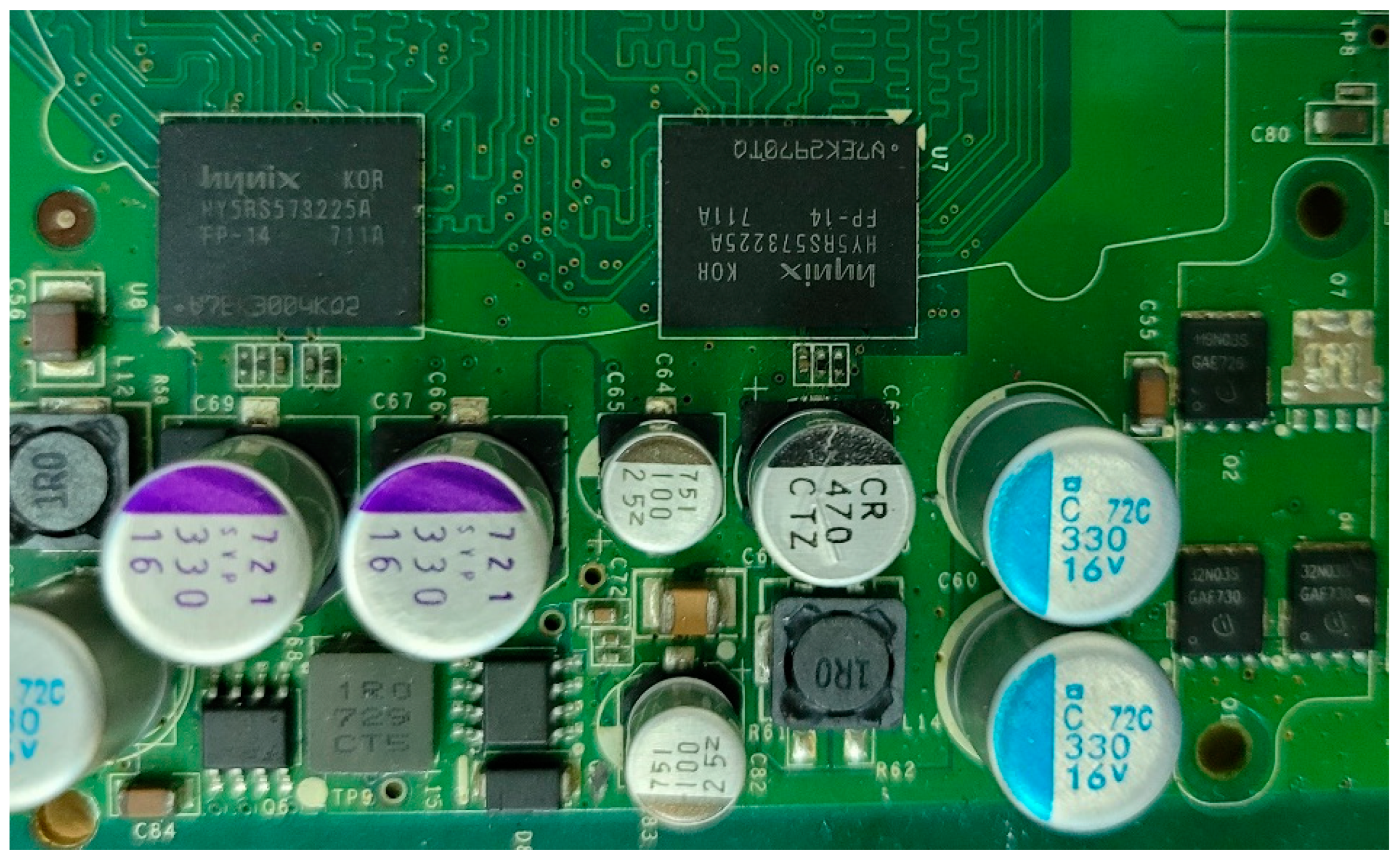



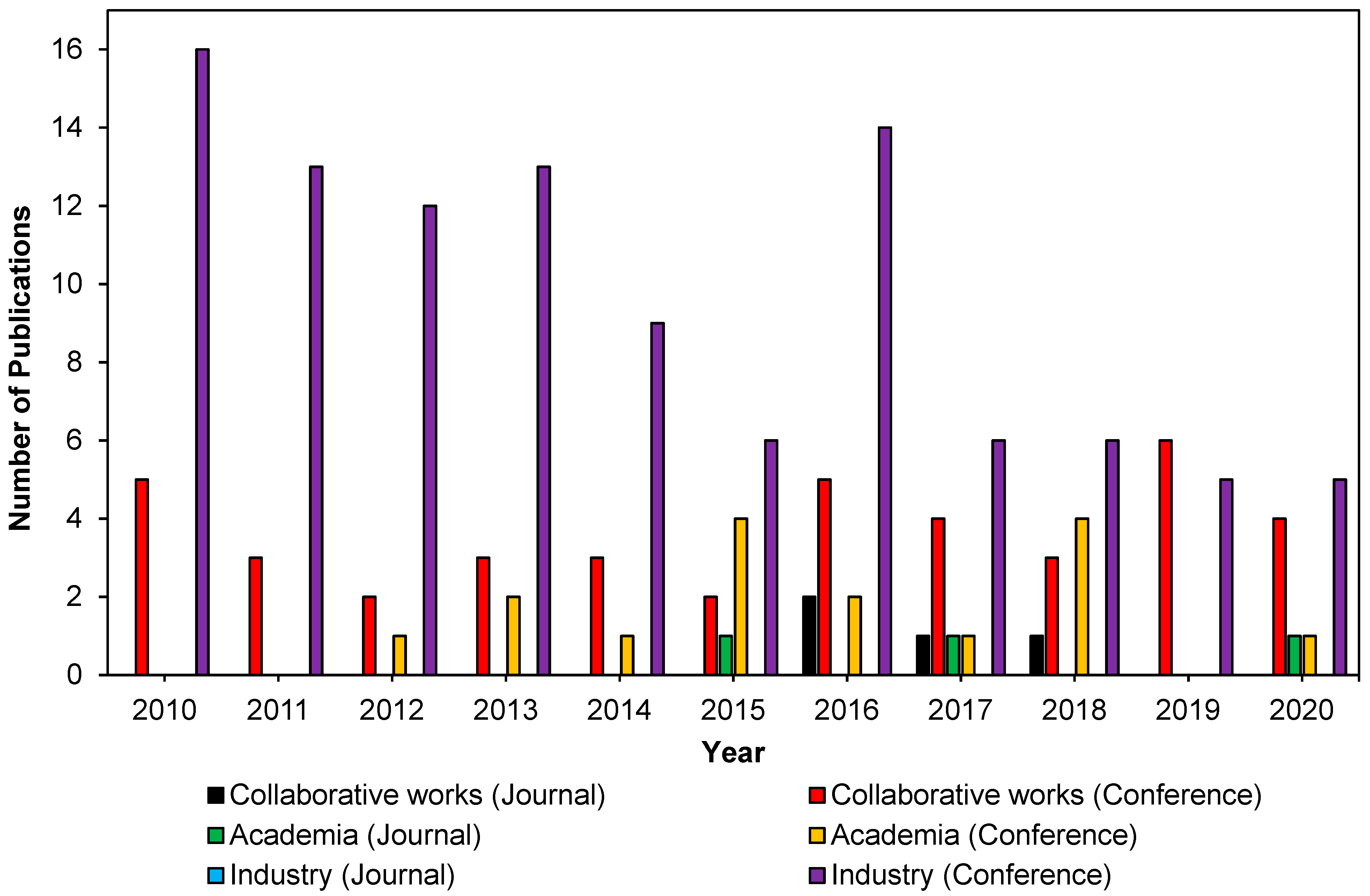
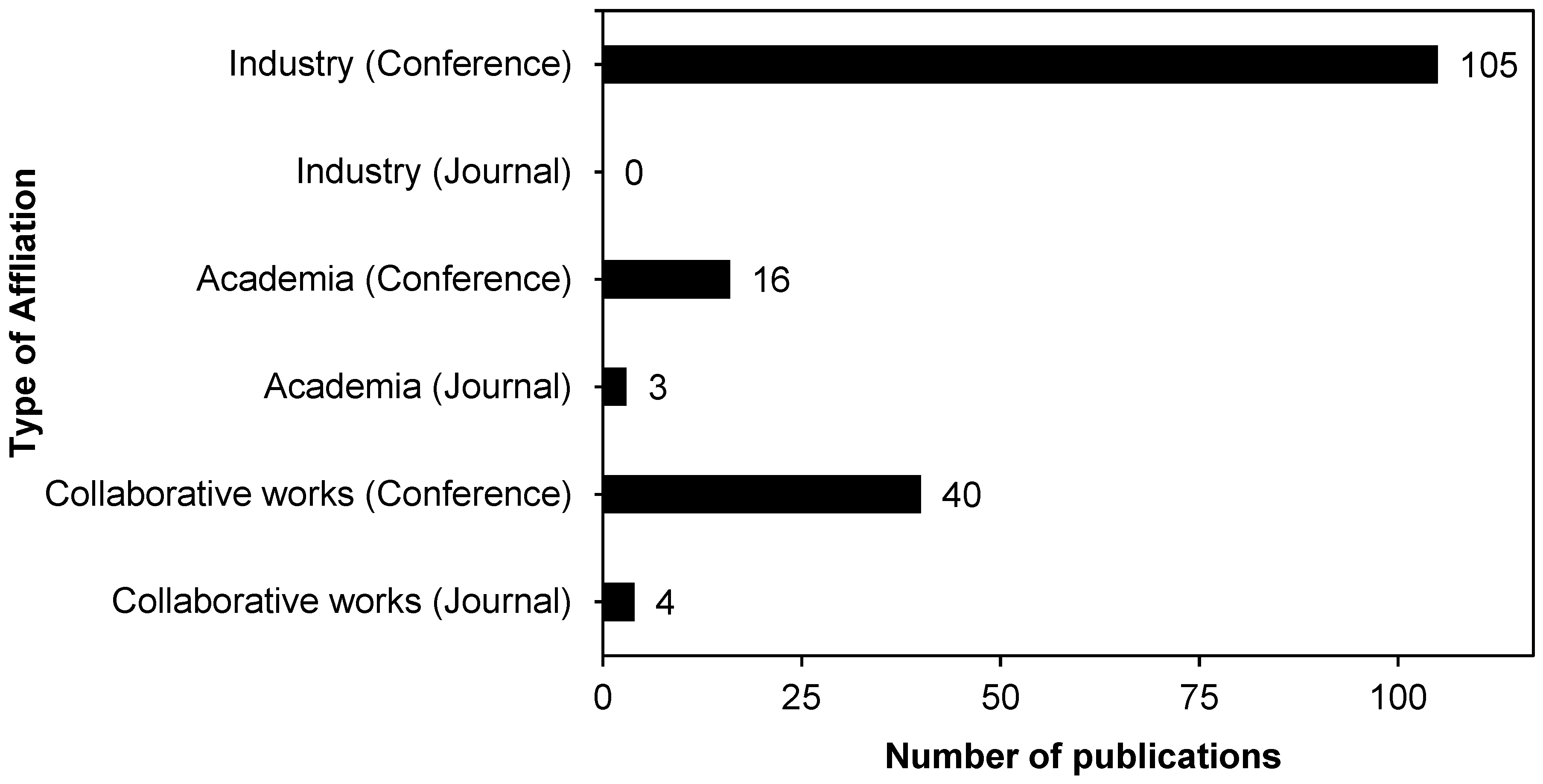
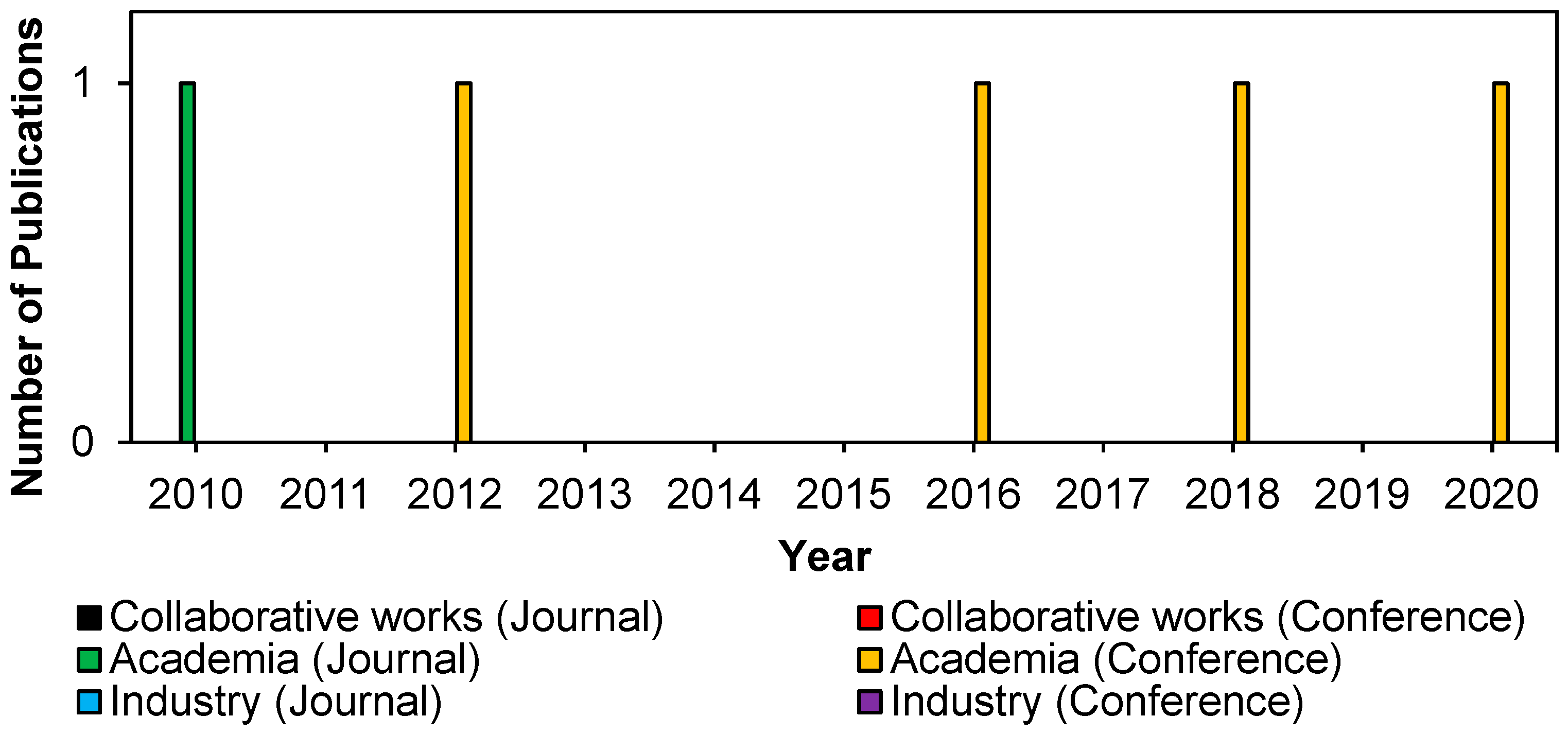
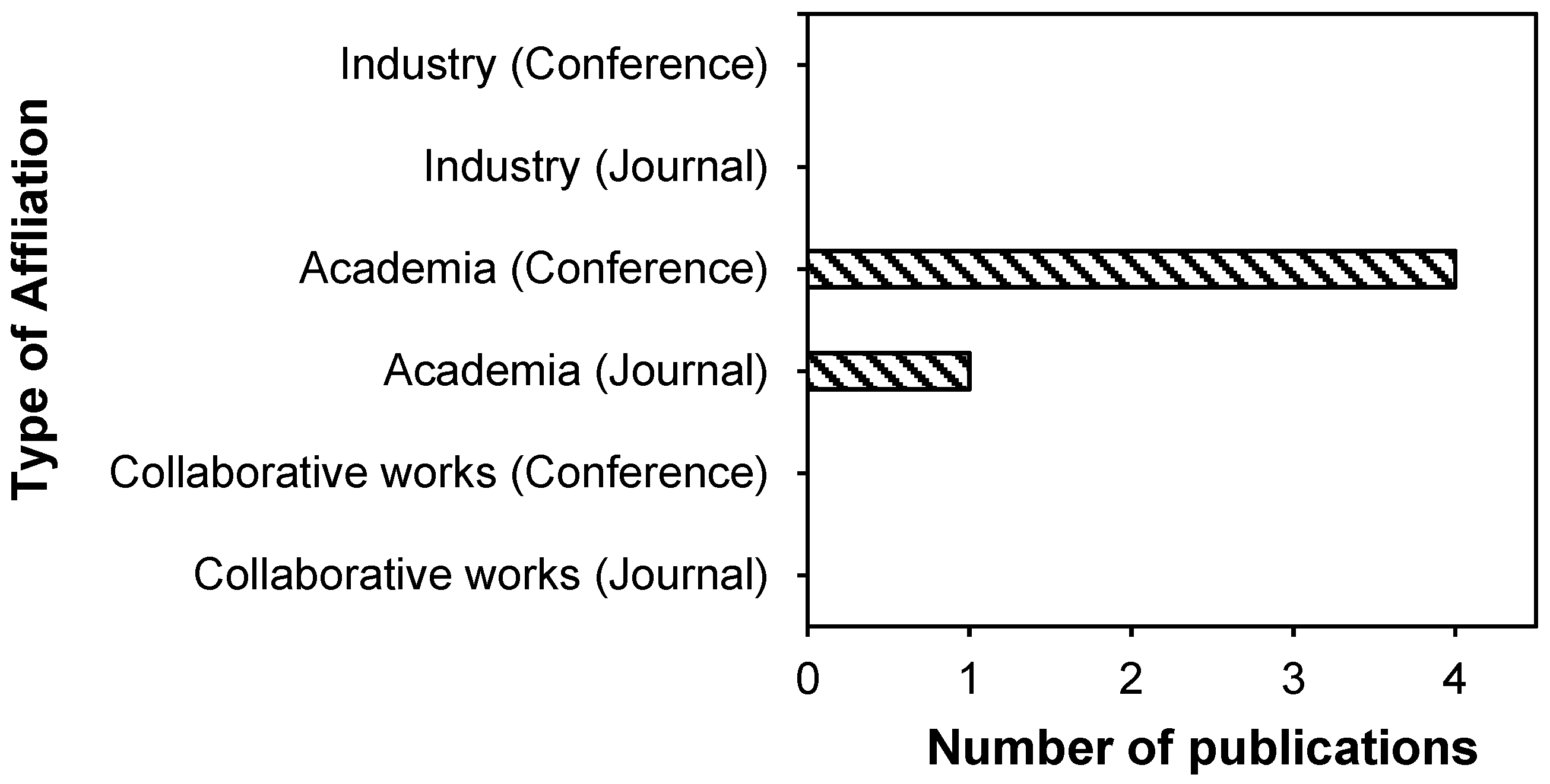

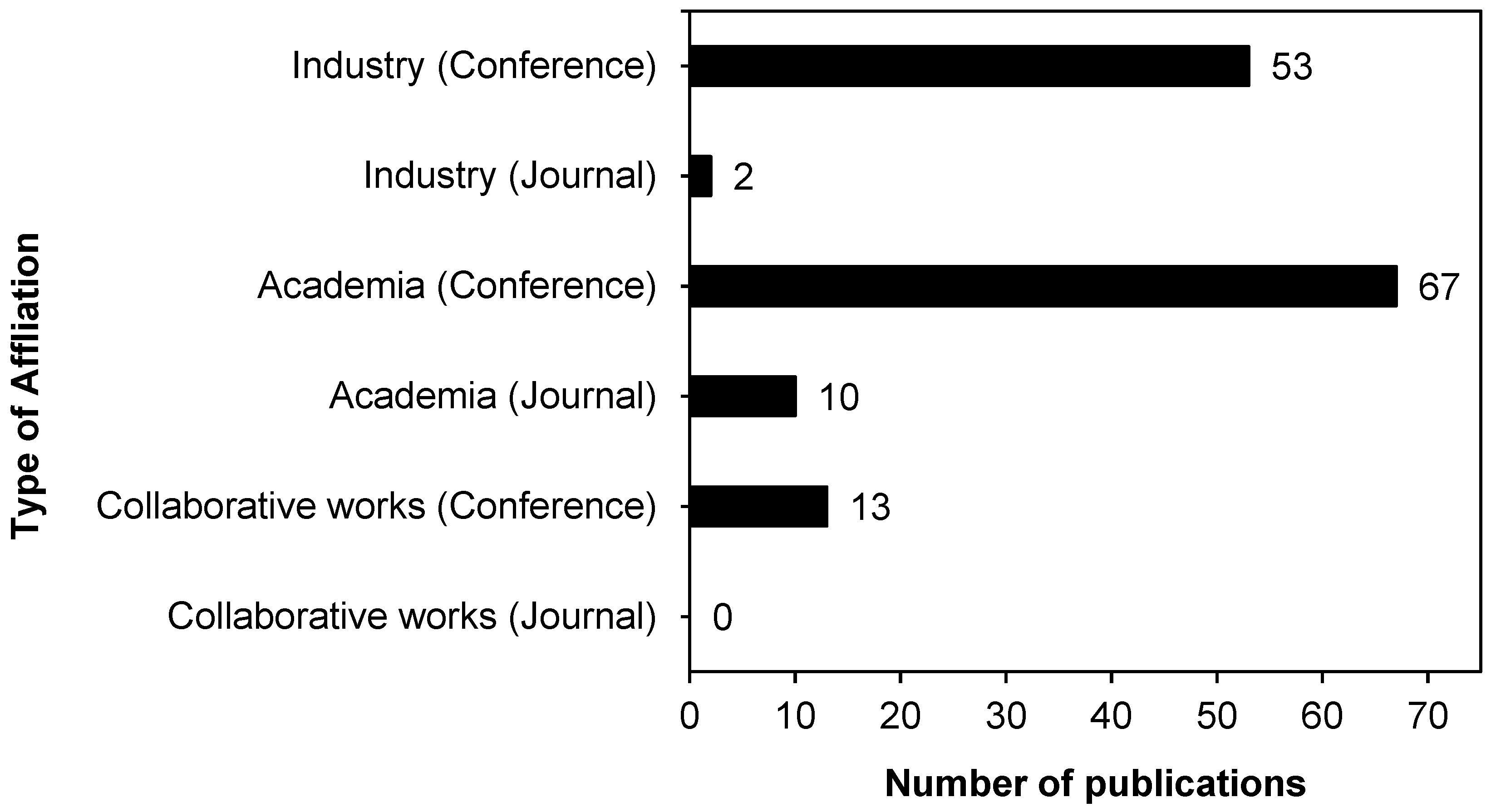

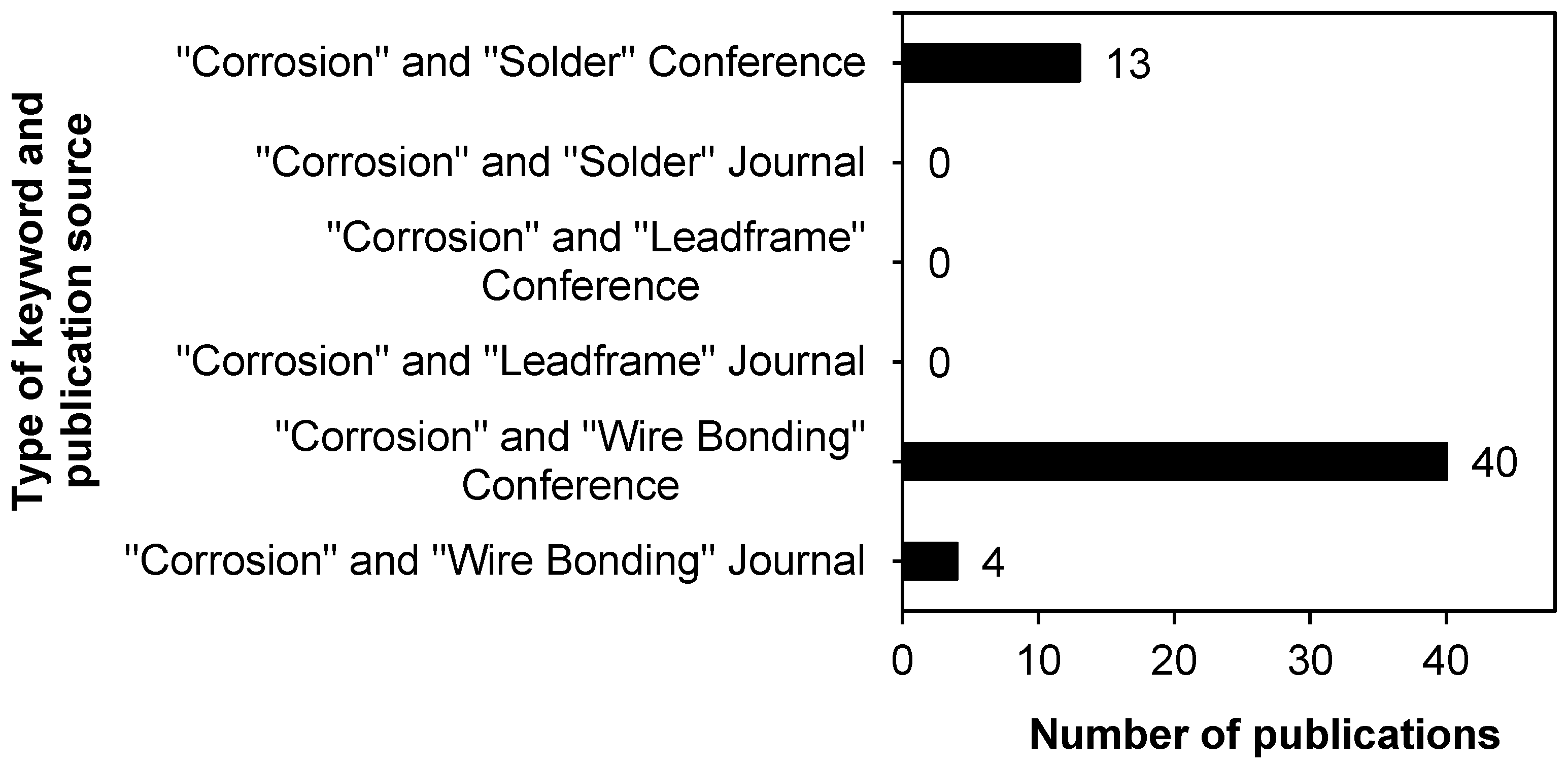
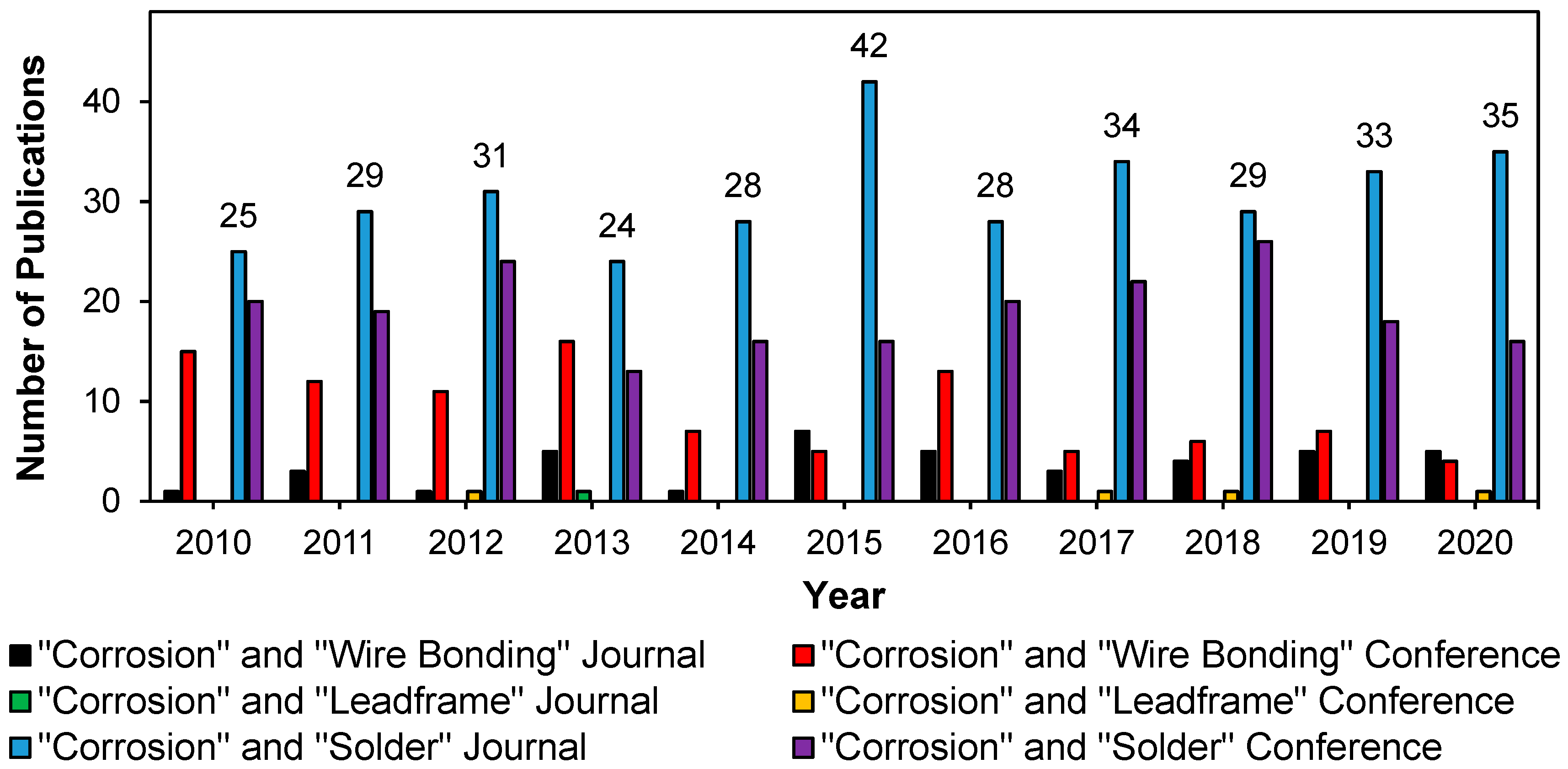
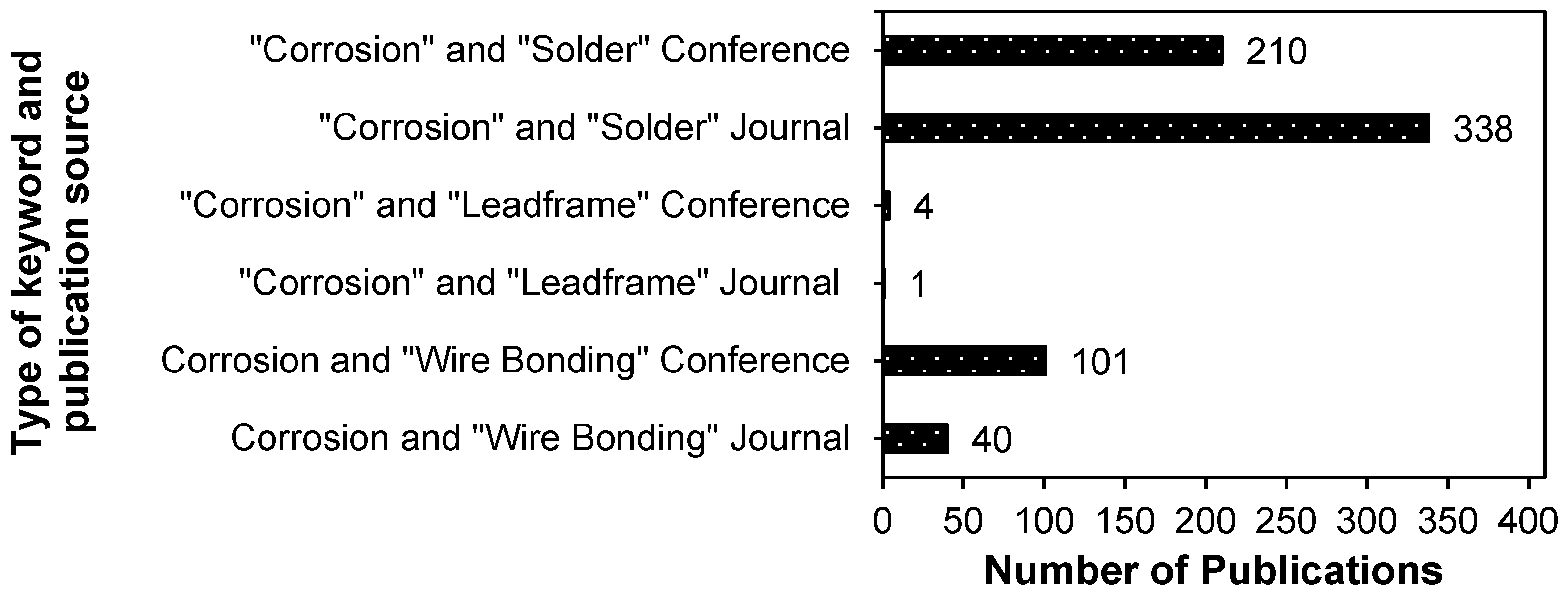




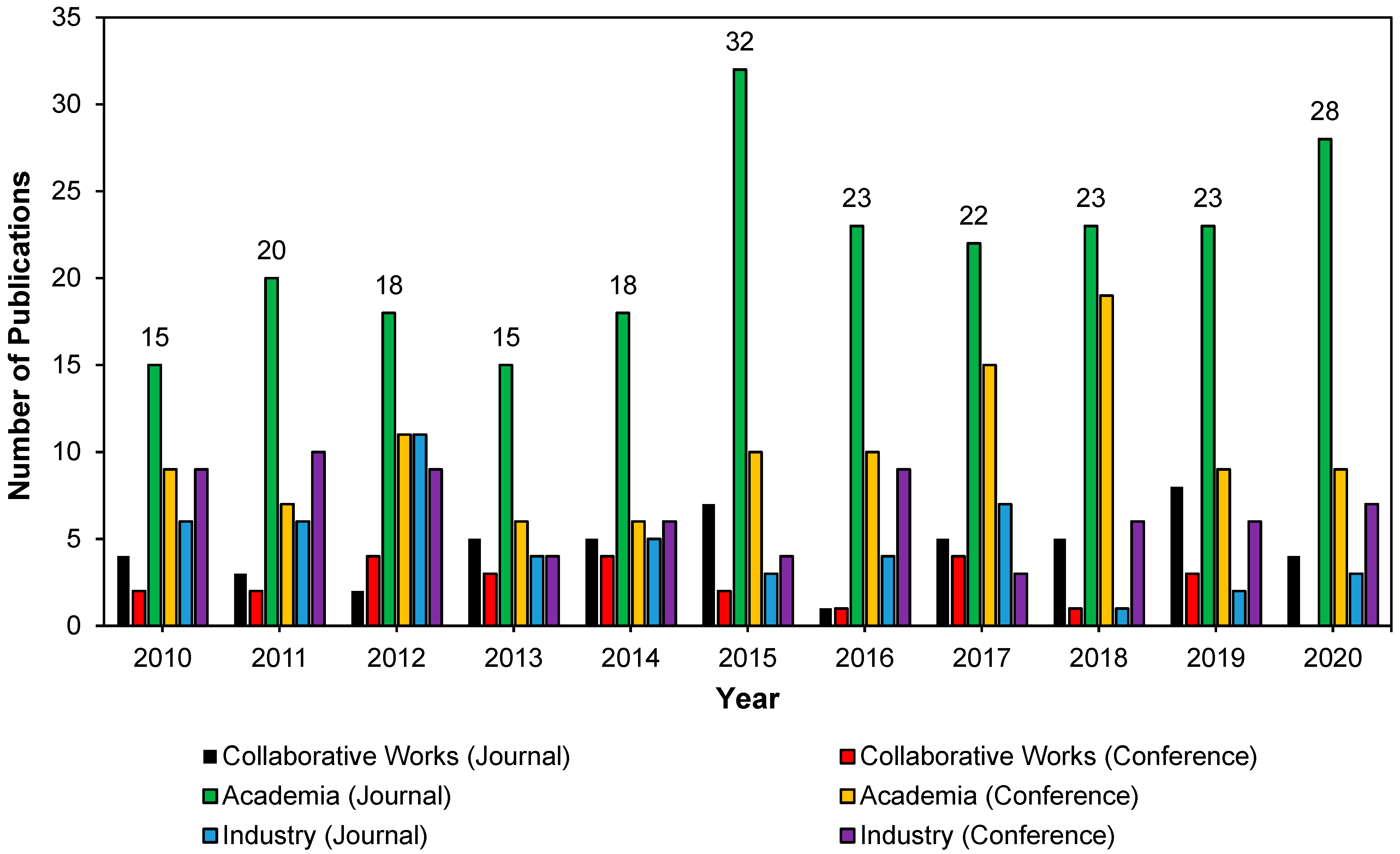
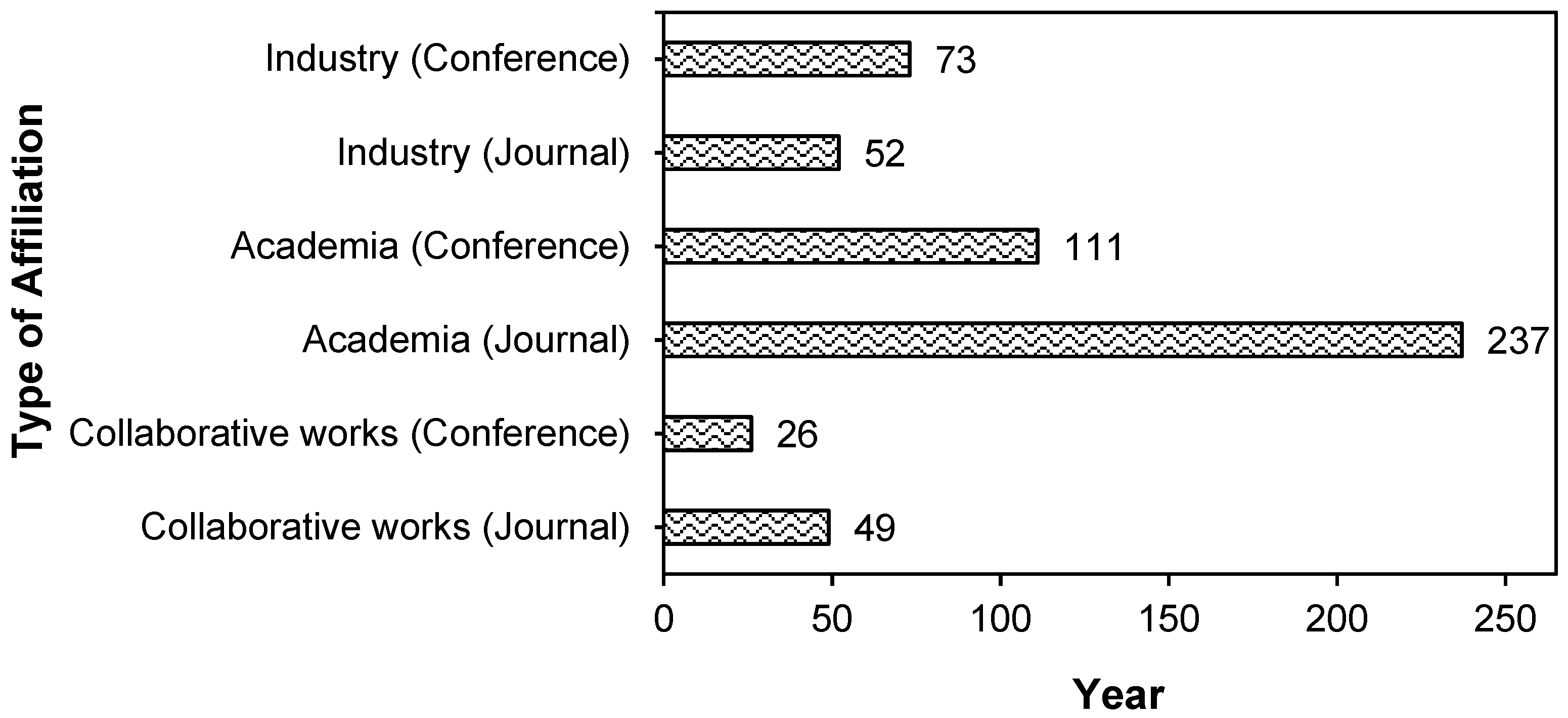
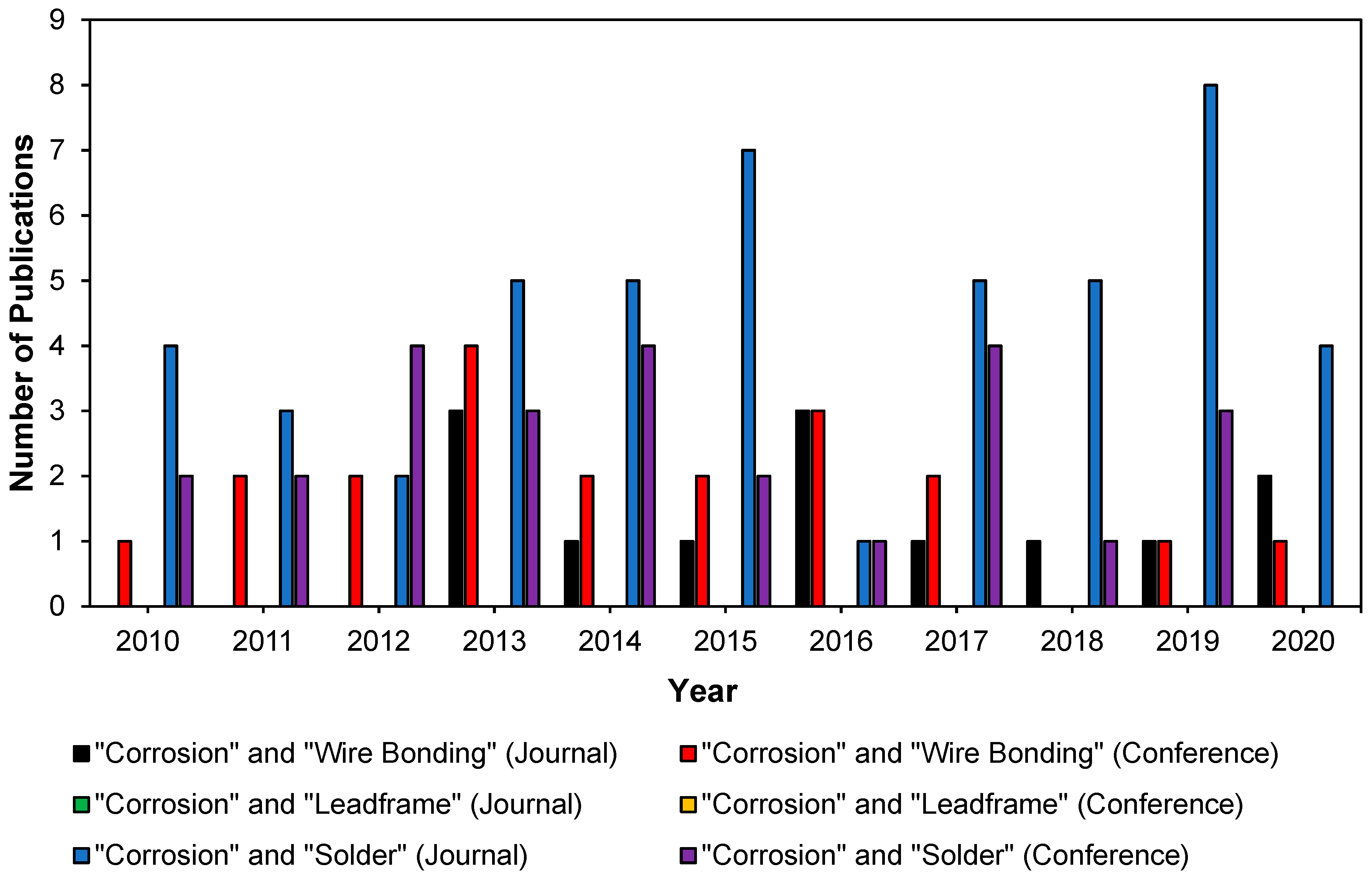
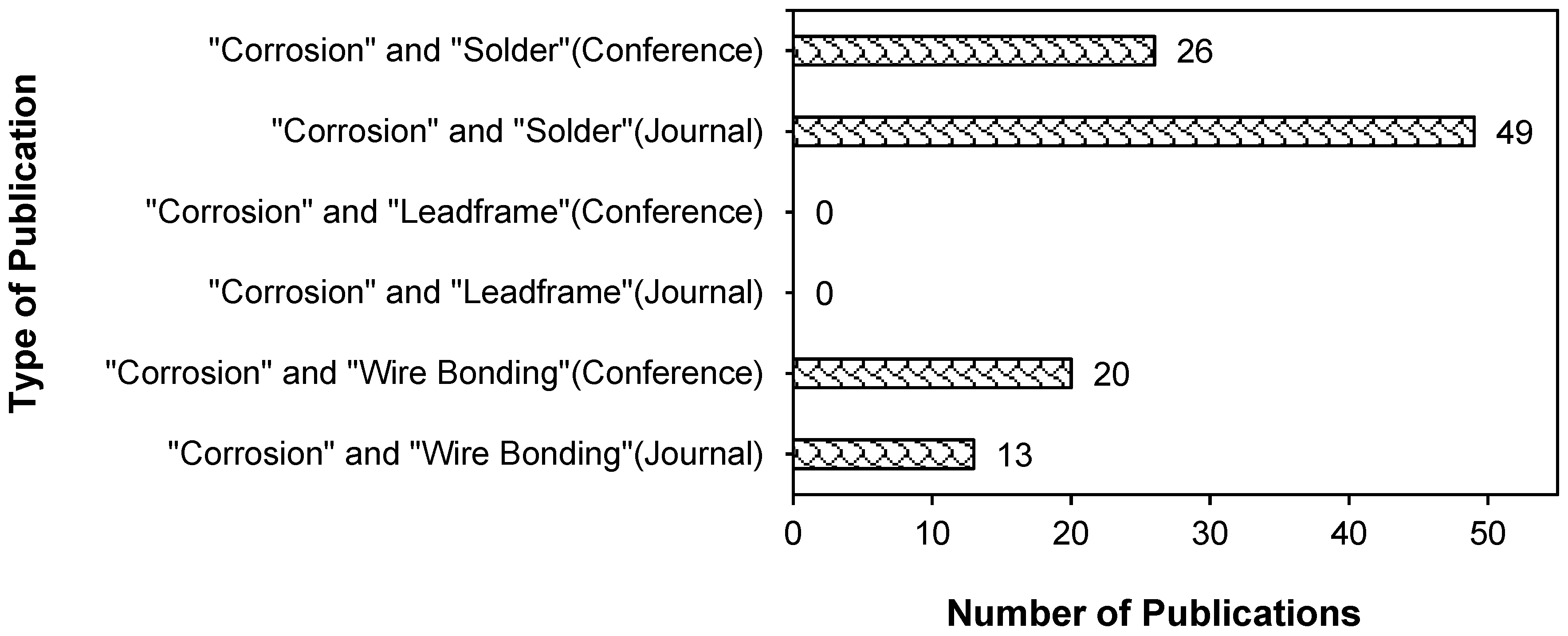
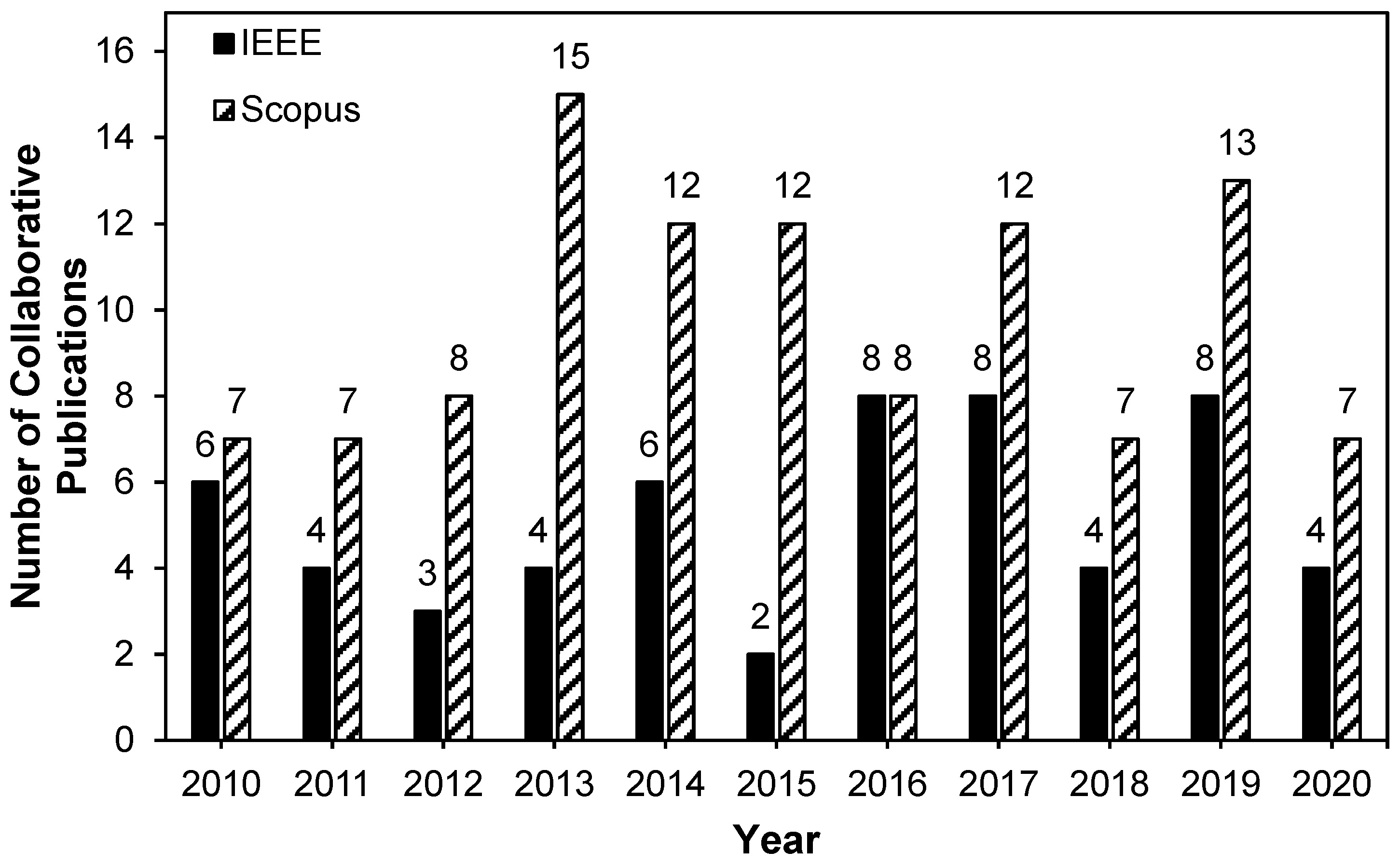
| Title of Paper | Refs | Remarks |
|---|---|---|
| Methodology to determine high precision variation in the electrical resistance of copper wires due to corrosion | [4] | Collaboration work involved two branches of Infineon Technologies in Singapore and Germany with Nanyang Technological University, Singapore. This work was funded by Singapore Economic Development Board and Infineon Technologies Asia Pacific Pte Ltd. |
| Corrosion of Copper Wire bonded Packages by Chlorine Containing Foreign Particles | [5] | Collaboration work in United States between NXP Semiconductors as an industry partner and The University of Texas at Austin as an academia partner. This work got technical support from the management. |
| Investigation of mechanism of corrosion resistance of Pd coated Cu wire joint by pseudo process | [6] | Collaboration work in Japan between Renesas Electronics Corporation and National Institute of Advanced Industrial Science and Technology (AIST). Part of this work was conducted at the AIST Nano-Processing Facility and supported by the “Nanotechnology Platform Program” of the Ministry of Education, Culture, Sports, Science and Technology (MEXT), Japan. |
| Reduction of Ag Corrosion Rate During Decapsulation of Ag Wire Bond Packages | [7] | Collaboration work between two countries, Samsung Electronics in Korea and Georgia Institute of Technology, Atlanta, United States. |
| Influence of Copper Wire Material Additive Elements to the Reliability of Wire Bonded Contacts | [8] | Collaboration work between two countries, a well-known institute Fraunhofer Institute, IWM in Germany with Nippon Micrometal Corporation in Japan. |
| How Copper Wire Material Additive Elements Effect the Reliability of Wire Bonded Contacts in HAST testing | [9] | |
| Investigation of mechanical and microstructural properties of a new, corrosion resistant gold-palladium coated copper bond wire | [10] | |
| A New Reliable, Corrosion Resistant Gold-Palladium Coated Copper Wire Material | [11] | |
| Influence of copper wire material to corrosion resistant packages and systems for high temperature applications | [12] | |
| Novel Corrosion Prevention Treatments for Cu Wire Bonded Device to Improve Bonding Reliability | [13] | Collaborative work between one academia, University of North Texas with two branches of Texas Instruments Inc. located in Dallas and Santa Clara. The authors acknowledge supports from Semiconductor Research Corporation (SRC) and technical assistance from UNT Materials Research Facility. |
| An Evaluation of Effects of Molding Compound Properties on the Reliability of Ag Wire Bonded Components | [14] | Collaborative work between seven authors from Purdue University and Juniper Networks. The work was done in United States. |
| Effects of Pd distribution at free air ball in Pd coated Cu wire | [15] | One of the authors of this paper having two affiliations of MK Electron Co., Ltd. and Myongji University. We believe that he had engage in his postgraduate study at Myongji University. This work was done in Korea. |
| Corrosion Behavior of Cu-Al Intermetallic Compounds in Copper Wire Bonding in Chloride-Containing Accelerated Humidity Testing | [16] | Collaborative work between two authors from NXP Semicondutors Guangdong Ltd. and two authors from Hong Kong University of Science & Technology. The authors also have acknowledged contribution from other branches of NXP Semiconductors located in Hong Kong for research materials and technical support. |
| Investigation of Cu wire neck crack under thermal cycling test | [17] | Collaborative work in Hong Kong, China between NXP Semiconductors HK as industry partner and Hong Kong University of Science and Technology as academia partner. |
| Influence of the zinc-oxide/salt content in the aluminum soldering flux on interfacial microstructure and mechanical property of Sn-0.7Cu/Al joints in assembling LED lighting components | [18] | Collaborative work between South China University of Technology and Guangdong Welding Institute. Both industry and academia are in Guangzhou, China. The collaboration work was supported by three research grants i.e., National Natural Science Foundation of China, Science and Technology Planning Project of Guangdong Province and Guangdong Provincial Key Laboratory of Advanced Welding Technology. |
| Evaluation of the corrosion performance of Cu-Al intermetallic compounds and the effect of Pd addition | [19] | Collaborative work between two branches of Kulicke & Soffa Pte. Ltd. located at Singapore and United States with Nanyang Technological University, Singapore. One of the authors having both industry and academia affiliation. We believe that the author pursuing his postgraduate study as the work was financially supported by Economic Development Board (EDB) under Industrial Postgraduate Programme (IPP). The authors also acknowledge technical and expertise from Prof Daniel Mandler from The Hebrew University of Jerusalem, Dr Zviad Tsakadze from NTU FACTS, Vinod Kumar from NTU, Dr Sudesh L. Wijesinghe and Tan Yong Teck from SIMTech. |
| Evaluation of Corrosion Resistance of Ag-Alloy Bonding Wires for Electronic Packaging (journal) | [3] | This collaborative paper published in journal. The work is in Taiwan, China by five authors from industry, Wire Technology Company, Ltd. and two authors are from National Taiwan University. The work was partly supported by Industrial and Academic Cooperation Program through Wire Technology Company, Ltd., and Ministry of Science and Technology, Taiwan, under a research grant. |
| Materials Characteristics of Ag-Alloy Wires and Their Applications in Advanced Packages (journal) | [2] | |
| Influence of Au film thickness on surface morphology and properties of substrate with Ni/Au microcones | [20] | Collaborative work in Shanghai, China. Two authors are from Shanghai Jiao Tong University collaborate with two authors from SanDisk Semiconductor Co., Ltd. The research was funded by National Basic Research Program of China and National Nature Science Foundation of China. |
| The corrosion behavior of Ag alloy wire bond on Al pad in molding compounds of various chlorine contents under biased-HAST | [21] | Collaborative work in between ASE Global in Taiwan and Japan as industry partner and National Cheng Kung University, Taiwan as academia partner. |
| The corrosion performance of Cu alloy wire bond on Al pad in molding compounds of various chlorine contents under biased-HAST | [22] | |
| 3-D Numerical Multiphysics Model for Cu-Al Wire Bond Corrosion | [23] | The main author of this paper is from academia, Auburn University. They collaborate with industry, Texas Instruments. All the work were done in United States and supported by a research grant from the Semiconductor Research Corporation (SRC) and Members of NSF-CAVE3 Research Center at Auburn University. |
| A Novel Numerical Multiphysics Framework for the Modeling of Cu-Al Wire Bond Corrosion under HAST Conditions | [24] | |
| Numerical Multiphysics Model for Cu-Al Wire Bond Corrosion Subjected to Highly-Accelerated Stress Test | [25] | |
| Package-level multiphysics simulation of Cu-Al WB corrosion under high temperature/humidity environmental conditions | [26] | |
| Development of Model for Identification of Process Parameters for Wet Decapsulation of Copper–Aluminum Wirebond in PEMs (journal) | [26] | |
| Model for Interaction of EMC Formulation with Operating Current and Reliability of Cu-Al Wirebonds Operating in Harsh Environments | [27] | |
| Microstructural Indicators for Prognostication of Copper–Aluminum Wire Bond Reliability Under High-Temperature Storage and Temperature Humidity (journal) | [28] | |
| Multiphysics Life-Prediction Model Based on Measurements of Polarization Curves for Copper-Aluminum Intermetallics | [29] | |
| Prognostic indicators for Cu-Al wirebond degradation under operation at elevated temperature and combined temperature humidity | [30] | |
| Prognostication of copper-aluminum wirebond reliability under high temperature storage and temperature-humidity | [31] | |
| Low-cost silver alloy wire bonding with excellent reliability performance | [32] | Collaborative work in Taiwan involved between Elite Semiconductor Memory Technology Inc. as industry partner and Department of Physics, Tunghai University as academia partner. This work acknowledges few names including the Vice President of Elite Semiconductor Memory Technology Inc., United States. The authors also acknowledge Siliconware Precision Industries Co., Ltd. for the support in the packaging processes. |
| Microwave Induced Plasma decapsulation of thermally stressed multi-tier copper wire bonded IC packages | [1] | This paper involved three department from Delft University of Technology, Netherlands collaborates with industry namely MASER Engineering also located in Netherlands. MASER is a company that provide Reliability Test and Failure Analysis Services to the semiconductor and electronic systems industry since 1993. This paper acknowledges Institute of Microelectronics, Agency for Science, Technology and Research (A*STAR); iNEMI’s Copper Wire Bonding Reliability Consortium for providing the samples and some colleagues for experiments support. |
| Investigation of fluorine induced probe marker discoloration | [33] | Collaborative works from industry and academia in Taiwan. 6 authors are from Elite Semiconductor Memory Technology Inc collaborate with one author from Tunghai University. The paper also acknowledges technical support from the manager and vice president of Elite Semiconductor Memory Technology Inc. |
| Wearout reliability study of Cu and Au wires used in flash memory fine line BGA package | [34] | This paper is authored by CL Gan which having affiliation from industry (Spansion Penang Malaysia) and academia (UniMAP, Malaysia). It also authored by two researchers from other branches of Spansion in Thailand. The paper acknowledges an appreciation to Gene Daszko and Tony Reyes from Spansion which located at Sunnyvale, Carlifornia, United States, Francis Classe from Cypress Semiconductor Corporation) and HL Chong from Spansion Penang Malaysia). |
| Investigation of palladium coverage on free air balls of palladium-coated copper wires | [35] | Collaborative works from ASE Assembly& Test (Shanghai) Limited, China and Fudan University of China. The industry partner offers packaging and testing services for semiconductors such as integrated circuit (IC) design, assembly & test, wafer probing, and final test services. |
| Investigation of palladium coverage on bonded balls of palladium-coated copper wires | [36] | Collaborative works involved semiconductor assembly company, Powertech Technology Inc. located in China with a manufacture of non-conventional bonding wires (such as copper, palladium coated copper and silver alloy fine wires) Semicon Fine Wire Pte Ltd. located in Singapore. These two industries collaborated with 1TE College Central, Singapore. |
| Pd effects on the reliability in the low cost Ag bonding wire | [37] | Mr Jong-Soo Chu is having two affiliation which is MK Electron and Seoul National University, probably he further his study in 2010. The rest authors are from MK Electron collaborate with Samsung Electronics. All affiliations are located at Korea. |
| On the intermetallic corrosion of Cu-Al wire bonds | [38] | Collaboration work from well-known institute Fraunhofer Institute, IWM, Germany with NXP Semiconductors. We believe that this work involved many branches of NXP Semiconductors involving 15 researchers. This work supported by academia, Prof. Jingshen Wu from The Hong Kong University of Science and Technology (HKUST). |
| A study on fine pitch Au and Cu WB integrity vs. Ni thickness of Ni/Pd/Au bond pad on C90 low k wafer technology for high temperature automotive | [39] | Four researchers from Freescale Semiconductor Malaysia collaborate with four researchers from Freescale Semiconductor Texas, United States and one researcher from MMU Malaysia. This work got full support from MMU management. |
| High temperature automotive application: A study on fine pitch Au and Cu WB integrity vs. Ni thickness of Ni/Pd/Au bond pad on C90 low k wafer technology | [40] | |
| Comparsion of Au/Al and Cu/Al in wirebonding assembly and reliability | [41] | Collaborative work between industry (ProMat Consultants in Singapore) and academia (ITE College Central). The project was funded by the World Gold Council. |
| Comparsion of Au/Al and Cu/Al in wirebonding assembly and reliability | [41] | |
| Effects of moisture on reliability of gold and copper ball bonds | [42] |
| Title of Paper | Refs | Remarks |
|---|---|---|
| Electrochemical corrosion in electric energy meters | [44] | Collaboration work in China between the industry, Southern Power Grid Science Research Institute Co., Ltd.,Guangzhou with three authors and the academia, Huazhong University of Science and Technology Wuhan with three authors. |
| Innovative Socketable and Surface-Mountable BGA Interconnections | [45] | Collaboration work in United States between Georgia Institute of Technology, Atlanta and Intel Corporation. This work was sponsored by the Semiconductor Research Corporation (SRC). The authors also acknowledge another industry, Atotech GmbH for providing the research material, facilities, and technical support. |
| Flexible connection for reflow free super fine pitch QFP SMT components | [43] | Collaboration work in China involving Guilin University of Electronic Technology consist of seven authors and Hengchang Electronic Technology Lit. Co consists of three authors. The authors acknowledge the Guilin Bureau of Science and Technology and Guangxi Bureau of Science and Technology and Guangxi key lab for facilities support of this work. |
| An investigation into the effect of dry bake on the solderability degradation of electrodeposited tin finishes | [46] | Collaboration work between two countries, United Kingdom and China. The academia partner is Loughborough University with five authours and industry partner is Huawei Technologies CO. Ltd. with two authors. |
| Eternal Packages: Liquid Metal Flip Chip Devices | [47] | Collaboration work in Canada involving three authors from Universite de Sherbrooke, Sherbrooke and two authors from IBM Canada Limited, Bromont. This work was supported in part by the NSERC/IBM Canada Industrial Research Chair in Smarter Microelectronic Packaging for Performance Scaling, with financial contributions from the IBM Corporation, the Natural Sciences and Engineering Research Council of Canada, PROMPT, and the Universite de Sherbrooke. |
| Removed organic solderability preservative (OSPs) by Ar/O2 microwave plasma to improve solder joint in thermal compression flip chip bonding | [48] | This paper is authored by three authors from ASE Group, China and three authors from National Cheng Kung University, China. This collaboration work involved two department of the academia partner, i.e., Department of Materials Science and Engineering and Department of Chemical Engineering. For this collaboration, the industrial partner has provided financial support. |
| Reliability study on chip capacitor solder joints under thermo-mechanical and vibration loading | [49] | Collaboration work in Germany between Fraunhofer IKTS-MD, Dresden and Continental Automotive GmbH, Regensburg. |
| Failure analysis and case study of plastic encapsulated microelectronics | [50] | Collaboration between China Electronics Product Reliability and Environmental Testing Institute as industry partner with Peking University, China as academia partner. Both parties have contributed in terms of providing failure samples for analysis, and failure analysis team and research facilities. |
| Solder joint properties of Sn-Ag-Cu solders on environmental-friendly plasma surface finish | [51] | Collaboration between two industries partner, Advanced Welding and Joining Technology Center, KITECH and JESAGI HANKOOK Ltd. with Andong National University. The authors acknowledge the financial support from Ministry of Knowledge Economy. The location of this work is in Korea. |
| Investigation of the oxidation process at the copper-solder interface with atomic force microscopy | [52] | Collaboration work in Hungary between Budapest University of Technology and Economics and Preclinical Imaging and Biomarker Centre. The academia got financial support for the work. |
| Study on wettability and corrosivity of a new no-clean flux for lead-free solder paste in electronic packaging technology | [53] | Collaboration work between one author from Advanced Technology & Materials Co., and three authors from Henan Polytechnic University. This work was done in China. |
| Packaging of high-power semiconductor laser arrays using a novel macro-channel cooler | [54] | Collaboration work in China between Xi’an Institute of Optics and Precision Mechanics, Chinese Academy of Sciences and Xi’an Focuslight Technologies Co. This work was supported by the project of the “Hundred Talents Research Fund of Chinese Academy of Sciences”, the Instrument Developing Project of the Chinese Academy of Sciences, and the National High Technology Research and Development Program of China. |
| Title | Refs | Remarks |
|---|---|---|
| Corrosive degradation evaluation of semi-parallel wire cables with high-density polyethylene sheath breaks | [55] | Collaboration works in China between Central South University and Engineering Technology Research Center for Prefabricated Construction Industrialization of Hunan Province. |
| Corrosion-induced degradation and its mechanism study of Cu–Al interface for Cu-wire bonding under HAST conditions | [56] | Collaboration works in 2 countries China and United States, whereby National Cheng Kung University, Tainan, Texas Instruments Taiwan Limited Inc. and Panasonic Energy of North America. |
| Corrosion of Gold by a Nanoscale Gold and Copper Beltlike Structure | [57] | Collaboration works in 2 countries United Kingdom and Japan, whereby University of Oxford, Diamond Light Source Ltd., and JEOL Ltd. |
| The bondability and reliability of a ternary Ag alloy wire on an Al bonding pad under N2-free conditions | [58] | Collaboration works in South Korea between Samsung Electronics Co., Ltd. and Sungkyunkwan University. |
| BGA substrate outgassing negative impact study on Cu wire bonding | [59] | Collaboration works in China between Tianjin University and NXP Semiconductor (China) Ltd. |
| Microstructural Indicators for Prognostication of Copper-Aluminum Wire Bond Reliability Under High-Temperature Storage and Temperature Humidity | [19] | Collaboration works in United States between Auburn University and Texas Instruments. |
| Materials Characteristics of Ag-Alloy Wires and Their Applications in Advanced Packages | [19] | Collaboration works in China between Wire Technology Company, Ltd., and National Taiwan University. |
| Effect of palladium on the mechanical properties of Cu and Cu-Al intermetallic compounds | [60] | Collaboration works in Singapore between Nanyang Technological University, Kulicke and Soffa Pte. Ltd., 6 and A STAR (Agency for Science Technology and Research). |
| Evaluation of the corrosion performance of Cu-Al intermetallic compounds and the effect of Pd addition | [19] | Collaboration works in 2 countries Singapore and United States whereby Kulicke and Soffa Pte. Ltd., Nanyang Technological University and Kulicke and Soffa Industries Inc. |
| Effect of palladium on the mechanical properties of Cu-Al intermetallic compounds | [60] | |
| Ultra-fine pitch palladium-coated copper wire bonding: Effect of bonding parameters | [61] | |
| Effect of thickness and phosphorus content on Au/Pd/Ni(P) metal finish of printed circuit board | [62] | Collaboration works in 2 countries China and Philippines, whereby Chung Yuan Christian University, OMG (Asia) Electronics Company Limited and Mapúa Institute of Technology Intramuros. |
| Copper wire bonding concerns and best practices | [63] | Collaboration works in 2 countries United States and Singapore, whereby CALCE Electronic Products and Systems Center, University of Maryland and Nanyang Technological University. |
| Corrosion study and intermetallics formation in gold and copper wire bonding in microelectronics packaging | [64] | Collaboration works in Singapore between Institute of Technical Education, and Promat Consultants. |
| Methodology to determine high precision variation in the electrical resistance of copper wires due to corrosion | [4] | Collaboration works in 2 countries Singapore and Germany whereby Nanyang Technological University, Infineon Technologies Ag and Infineon Technologies Asia Pacific. |
| 3-D numerical multiphysics model for Cu-Al wire bond corrosion | [23] | Collaboration works in United States between Auburn University and Texas Instruments. |
| Multiphysics Life-Prediction Model Based on Measurements of Polarization Curves for Copper-Aluminum Intermetallics | [29] | |
| An Evaluation of Effects of Molding Compound Properties on the Reliability of Ag Wire Bonded Components | [14] | Collaboration works in United States between Purdue University and Juniper Networks. |
| Mechanistic Investigation and Prevention of Al Bond Pad Corrosion in Cu Wire-Bonded Device Assembly | [65] | Collaboration works in United States between University of North Texas, Texas Instruments Inc., and Texas Instruments Inc. |
| Corrosion Behavior of Cu-Al Intermetallic Compounds in Copper Wire Bonding in Chloride-Containing Accelerated Humidity Testing | [16] | Collaboration works in China between NXP Semiconductors Guangdong Ltd., Hong Kong University of Science and Technology and Clear Water Bay. |
| Evaluation of the corrosion performance of Cu-Al intermetallic compounds and the effect of Pd addition | [19] | Collaboration works in 2 countries in United States and Singapore wherby Kulicke and Soffa Pte. Ltd., and Nanyang Technological University. |
| Influence of Au film thickness on surface morphology and properties of substrate with Ni/Au microcones | [20] | Collaboration works in China between Shanghai Jiao Tong University and Semiconductor Co., Ltd. |
| Prognostic indicators for Cu-Al wirebond degradation under operation at elevated temperature and combined temperature humidity | [30] | Collaboration works in United States between Auburn University and Texas Instruments. |
| High temperature storage and hast reliability of Copper-Aluminum wirebond interconnects | [66] | |
| Prognostication of copper-aluminum wirebond reliability under high temperature storage and temperature-humidity | [31] | |
| Investigation of fluorine induced probe marker discoloration | [33] | Collaboration works in China between Elite Semiconductor Memory Technology Inc., and Tunghai University. |
| Low cost silver alloy wire bonding with excellent reliability performance | [32] | Collaboration works in China between Elite Semiconductor Memory Technology Inc., and Tunghai University. |
| Palladium-coated and bare copper wire study for ultra-fine pitch wire bonding | [67] | Collaboration works in 2 countries Singapore and United States whereby between Kulicke and Soffa Pte. Ltd., and Nanyang Technological University. |
| Pd-coated Cu wire bonding reliability requirement for device design, process optimization and testing | [68] | Collaboration works in 2 countries China and United States Xilinx Inc., Siliconware Precision Industries Co., Ltd., Kulicke and Soffa Industries, Inc., and University of Alabama. |
| Investigation of palladium coverage on free air balls of palladium-coated copper wires | [35] | Collaboration works in China between Fudan University and ASE Assemblyand Test (Shanghai) Limited. |
| Oxidation and corrosion of Au/Al and Cu/Al in wire bonding assembly | [69] | Collaboration works in Singapore between ITE College Central and Promat Consultants. |
| Comparsion of Au/Al and Cu/Al in wirebonding assembly and reliability | [41] | |
| Investigation of palladium coverage on bonded balls of palladium-coated copper wires | [36] | Collaboration works in Singapore between Powertech Technology Inc., ITE College Central and Semicon Fine Wire Pte. Ltd. |
| High temperature automotive application: A study on fine pitch Au and Cu WB integrity vs. Ni thickness of Ni/Pd/Au bond pad on C90 low k wafer technology | [40] | Collaboration works in 2 countries Malaysia and United States, whereby Freescale Semiconductor, (M) Sdn. Bhd., Freescale Semiconductor Inc., Corporate Headquarters, and Multi Media University. |
| Title | Authors | Remarks |
|---|---|---|
| Electrochemical corrosion in electric energy meters | [44] | Collaboration works in China between Southern Power Grid Science Research Institute Co. Ltd. Huazhong University of Science and Technology. |
| The morphology of Pb-free Sn-3.0Ag-0.5Cu solder reinforced by NiO nanoparticles | [70] | Collaboration works in Malaysia between Universiti Kebangsaan Malaysia and Jabil Circuit Sdn. Bhd. |
| Effect of phosphorus and nickel on electrochemical migration of Sn-3Ag-0.7Cu solder paste in simulated body fluid | [71] | |
| Electrochemical migration behaviours of low silver content solder alloy SAC 0307 on printed circuit boards (PCBs) in NaCl solution | [72] | |
| Electrochemical migration behaviours of low silver content solder alloy SAC 0307 on printed circuit boards (PCBs) in NaCl solution | [72] | |
| Investigation of electrochemical migration on Sn-0.7Cu-0.3Ag-0.03P-0.005Ni solder alloy in HNO3 solution | [73] | |
| Investigation of corrosion on SAC 305, SAC 0307 and SAC 0307-0.03P-0.005Ni solder paste alloys in simulated body fluid (SBF)-Journal | [74] | |
| Corrosion characterization of Sn-Zn solder: a review-Journal Collaboration works in 2 countries Malaysia and Turkey between Universiti Malaysia Perlis, Universiti Sains Malaysia, Duzce University, Universiti Kebangsaan Malaysiaia, Universiti Malaysia Kelantan, and Jabil Circuit Sdn Bhd | [75] | |
| Electrochemical migration and corrosion behaviours of SAC305 reinforced by NiO, Fe2O3, TiO2 nanoparticles in NaCl solution | [76] | Collaboration works in Malaysia between Universiti Kebangsaan Malaysia, Maktab Rendah Sains Mara Kuching, and Western Digital. |
| An investigation into the effect of dry bake on the solderability degradation of electrodeposited tin finishes | [46] | Collaboration works in United Kingdom and China between Loughborough University, Leicestershire, and Huawei Technologies Co. Ltd. |
| Accelerated SLID Bonding for Fine-Pitch Interconnects with Porous Microstructure | [77] | Fraunhofer Institute for Reliability and Microintegration had collaborated between Universität Dresden and University Berlin. |
| Influence of humidity on reliability of plastic packages | [78] | |
| Corrosion investigations on lead-free solder alloys in MgCl2 and NaCl solutions | [79] | The authors from Budapest University of Technology and Economics and Institute for Materials Science and Technology were collaborated with Bay Zoltan Foundation. |
| Corrosion investigations on lead-free micro-alloyed solder alloys used in electronics | [80] | |
| Electrochemical corrosion of sac alloys: A review—Journal Collaboration work in Hungary between Budapest University of Technology and Economics and Research Centre | [81] | |
| Failure analysis and case study of plastic encapsulated microelectronics | [50] | Collaboration works in China between Testing Institute, Guangzhou and Peking University. |
| The degradation of multi-crystalline silicon solar cells after damp heat tests | [82] | Korea Electronic Technology Institute had collaborated with Korea University and Sungkyunkwan University. |
| The effect of encapsulant discoloration and delamination on the electrical characteristics of photovoltaic module | [83] | |
| Microstructure of Sn-1Ag-0.5Cu solder alloy bearing Fe under salt spray test | [84] | Collaboration works in Malaysia between Universiti Malaya, Universiti Sains Malaysia and Malaysian Institute of Microelectronic Systems (MIMOS) Berhad. |
| The effect of moisture on the degradation mechanism of multi-crystalline silicon photovoltaic module | [85] | Collaboration works in China between China Academy of Space Technology and Harbin Institute of Technology. |
| Research of reflow soldering on Al-SiC composite material and thick film ceramic substrates | [86] | |
| The comparison on the corrosion resistance of different kinds of PCB surface finishing: OSP, LF HASL and ENIG | [86] | Collaboration works in China between CERL Lab and PCB CE, Inventec Corporation (Taoyuan) and National Chiao Tung University. |
| Investigation of the oxidation process at the copper-solder interface with atomic force microscopy | [52] | Budapest University of Technology and Economics had collaboration with Preclinical Imaging and Biomarker Center and National Institute for Materials Science, Tsukuba, Japan. |
| Tin whisker growth from Sn-Cu (0–5 wt%) surface finishes | [87] | |
| Au-Ge based alloys for novel High-T Lead Free Solder materials—Fundamentals and applications | [88] | Collaboration works in 3 countries between Switzerland, Italy and United Kingdom whereby Empa-Materials Science and Technology, National Research Council (CNR), Institute for Energetics and Iterphases (IENI), University of Genova, Italy and University of Leeds. |
| Investigation of BGA crack issue in normal production line | [89] | Collaboration works in China between Huazhong University of Science and Technology and Flextronics Mobile and Consumer. |
| Effect of soldering parameters on reaction kinetics and phase transformations of SAC 305 solder | [90] | Collaboration works in United States between South Dakota School of Mines and Technology, and Radiance Technologies. |
| Stencil evaluation of ultra fine pitch solder paste printing process | [91] | Collaboration works in China between Wistron Corp., and National Taipei University of Technology. |
| Phase growth process of Sn-3.0Ag-0.5Cu solder joints under mechanical cyclic loading at the same temperature | [92] | Collaboration works in Japan between Toyama Prefectural University, Imizu, Toyama Industrial Technology Center, and Cosel Co., Ltd. |
| Application of phase growth approach to prediction of thermal fatigue crack initiation lifetime in SN-3.0AG-0.5CU solder joints | [93] | Collaboration works in Japan between COSEL Co., Ltd., Machinery and Electronics Research Institute and Toyama Prefectural University. |
| Corrosion behavior of Sn-based lead-free solder alloys: a review | [94] | Collaboration works in China whereby North China University of Water Resources and Electric Power, Zhengzhou Research Institute of Mechanical Engineering, Zhengzhou, Harbin Institute of Technology, State Grid Henan Electric Power Company, Ministry of Water Resources. |
| Effect of micromorphology on corrosion and mechanical properties of SAC305 lead-free solders | [95] | Collaboration works in China between Tianjin University and Beijing Institute of Space Mechanics & Electricity. |
| Influence of cobalt content on microstructure and corrosion performance of extruded Sn-9Zn solder alloys | [96] | Collaboration works in China between Research Institute of Electronics and Technology, Central South University and Key Laboratory of Electronic Packaging and Advanced Functional Materials. |
| The effect of rare earths additions on the microstructure and the corrosion behavior of Sn-0.7Cu-0.075Al solder alloy | [97] | Collaboration works in China whereby Guangxi University and Shenzhen Academy of Inspection and Quarantine. |
| Morphology, resistivity and corrosion behavior of tin coatings plated from citric acid bath | [98] | Collaboration works in South Korean between Ajou University, Korea Institute of Industrial Technology, and Hanbat National University. |
| Research Status and Prospect of Au-based Medium-Low Temperature Filler Metals | [99] | Collaboration works in China between in Nanjing University of Aeronautics and Astronautics, and Shanwei Source Advanced Materials Corporation. |
| Sliding Interconnection for Flexible Electronics with a Solution-Processed Diffusion Barrier against a Corrosive Liquid Metal | [100] | Collaboration works in China between Pukyong National University, Seoul National University of Science and Technology, Korea Institute of Energy Research. |
| Corrosion and Electrochemical Behavior of Sn-2Ag-0.5Cu Lead-Free Solders Solidified with Magnet Stirring | [101] | Collaboration works in Egypt between Zagazig University and Higher Technological Institute. |
| Electrochemical Migration Behavior Of Sn-3.0Ag-0.5Cu Solder Alloy Under Thin Electrolyte Layers | [102] | Collaboration works in China between Huazhong University of Science and Technology, Sinopec Research Institute of Petroleum Engineering and Survey and Design Institute. |
| Correlation between microstructure and corrosion behaviour of Bi-Zn solder alloys | [103] | Collaboration works in Spain between University of Campinas and National Center for Metallurgical Research (CENIM-CSIC). |
| Microstructural and damp-heat corrosion characteristics of Zn-2 wt%Al solder alloys containing trace Ag | [104] | Collaboration works in China between Zhengzhou University and Zhengzhou Research Institute of Mechanical Engineering. |
| The effect of homogenization treatment on microstructure and properties of ZnAl15 solder | [105] | |
| Microstructure and properties of Cu-Sn-Zn-TiO2 nano-composite coatings on mild steel | [106] | Collaboration works in 2 countries China and United States between Jiangsu University of Science and Technology and Pacific Northwest National Laboratory. |
| Corrosion mechanism of Zn-30Sn high-temperature, lead-free solder in neutral NaCl solution | [107] | Tsinghua University had collaborated with Osaka University and China Ship Development and Design Center. Harima Chemicals, Inc. and Senju Metal Industry Co., Ltd. |
| Effects of Zn-bearing flux on joint reliability and microstructure of Sn-3.5Ag soldering on electroless Ni-Au surface finish | [108] | |
| Electrochemical Behavior of Sn-9Zn-xTi Lead-Free Solders in Neutral 0.5M NaCl Solution | [109] | |
| Effect of trace Mn modification on the microstructure and corrosion behavior of Sn-9Zn solder alloy | [110] | Collaboration works in China between China Ship Development and Design Center and Tsinghua University. |
| Hillock Sn whiskers growth behaviors in Sn-0.3Ag-0.7Cu/Cu solder joints during corrosion | [111] | Chinese Academy of Science had collaborated with Jiangsu Normal University, Zhengzhou Research Institute of Mechanical Engineering, Institute of Metal Research, Shenzheng Huawei Technol. Inc. |
| Corrosion of Ga-doped Sn-0.7Cu solder in simulated marine atmosphere | [105] | |
| Ab initio surface properties of Ag-Sn alloys: Implications for lead-free soldering | [112]. | Collaboration works in 2 countries between and Ireland and China between College Dublin College Green and Nokia Bell Labs. |
| Surface metallization of Cu/Ni/Au coatings on diamond/Cu composite materials for heat sink application | [113] | Collaboration works in China between Hefei University of Technology and Guangdong University of Technology, Guangzhou and Hefei University of Technology and China Electronic Technology Group Corporation. |
| Corrosion behavior of Sn-3.0Ag-0.5Cu lead-free solder joints | [114] | This author had collaborated with 3 different industry such as Chinese Academy, US Environmental Protection Agency of Sciences and Senju Metal Industry Co., Ltd. |
| In situ 2D maps of pH shifts across brass-lead galvanic joints using microelectrodes | [114] | |
| Electrochemical behavior of Zn-xSn high-temperature solder alloys in 0.5 M NaCl solution | [114] | |
| BGA substrate outgassing negative impact study on Cu wire bonding | [59] | Collaboration works in China between Tianjin University and NXP Semiconductor (China) Ltd. |
| The Effect of Substrate Microstructure on the Heat-Affected Zone Size in Sn-Zn Alloys Due to Adjoining Ni-Al Reactive Multilayer Foil Reaction | [115] | Collaboration works in United States between University of Florida and Sandia National Laboratories. |
| Initial Corrosion Behavior and Mechanism of PCB–HASL in Typical Outdoor Environments in China | [116] | Collaboration works in China between University of Science and Technology Beijing and Luoyang Ship Material Research Institute. |
| Distribution system water age can create premise plumbing corrosion hotspots | [117] | Collaboration works in United States between Virginia Tech and Camp Dresser & McKee (CDM). |
| Effect of graphene nanosheets on the corrosion behavior of Sn–Ag-Cu solders | [118] | Collaboration works in China and Singapore whereby Tianjin University and Singapore Institute of Manufacturing Technology. |
| Investigation of Acetic Acid Corrosion Impact on Printed Solar Cell Contacts | [119] | Collaboration works in Germany whereby Fraunhofer Institute for Solar Energy Systems and University of Freiburg. |
| Effects of PCB Substrate Surface Finish, Flux, and Phosphorus Content on Ionic Contamination | [120] | Collaboration works in Poland whereby University of Agriculture in Krakow—Agriculture and Economics, Foundry Research Institute—Center for High-Temperature Studies, and Fideltronik Imel. |
| Corrosion of laser joined silicon carbide in gasification environment | [121] | Collaboration works in Germany between Institute of Energy and Climate Research (IEK-2), Technische Universität Dresden, Institute of Power Engineering. |
| A novel technique for the connection of ceramic and titanium implant components using glass solder bonding | [122] | Collaboration works in Germany between University Medicine Rostock, Praxis fuer Zahnheilkunde, and ZM Praezisionsdentaltechnik GmbH. |
| Corrosion behavior of Sn-3.0Ag-0.5Cu solder under high-temperature and high-humidity condition | [123] | Hebei Normal University had collaborated with Science and Technology and Chinese Academy of Sciences. |
| Effect of microstructure and Ag3Sn intermetallic compounds on corrosion behavior of Sn-3.0Ag-0.5Cu lead-free solder | [124] | |
| Study on mitigation method of solder corrosion for crystalline silicon photovoltaic modules | [125] | Collaboration works in 2 countries South Korea and Australia whereby Korea Electronic Technology Institut, University of New South Wales and Korea University. |
| Methods for predicting corrosion on electronic products | [126] | Collaboration works in 2 countries Sweden and Denmark, whereby SP Technical Research Institute of Sweden, Jönköping University and SP Technical Research Institute of Sweden A/S. |
| Enhancement of interfacial reaction between solid iron and molten tin by mechanical actions | [127] | Toshiba Corporation, Toshiba Electronics Trading (Malaysia) Sdn. Bhd. and Furukawa Co., Ltd. had collaborated with Saitama University and Nagaoka University of Technology. |
| Creep-fatigue crack growth behavior of Pb-containing and Pb-free solders at room and elevated temperatures | [128] | |
| Effect of Ni-coated carbon nanotubes on the corrosion behavior of Sn-Ag-Cu solder | [129] | Collaboration works in 2 countries China and Singapore, whereby Tianjin University, Tianjin Key Laboratory of Advanced Joining Technology and Singapore Institute of Manufacturing Technology. |
| The corrosion characteristics and solderability of immersion tin coatings on copper | [130] | Collaboration works in Poland between Tele and Radio Research Institute and Warsaw University of Technology. |
| Effect of thickness and phosphorus content on Au/Pd/Ni(P) metal finish of printed circuit board | [62] | Collaboration works in Philipines between Chung Yuan Christian University, OMG (Asia) Electronics Company Limited and Mapúa Institute of Technology Intramuros. |
| Effect of oxidation on whisker growth in RE-containing lead-free solder | [131] | Collaboration works in China between Nanjing University of Aeronautics and Astronautics and Zhengzhou Research Institute of Mechanical Engineering. |
| A comparison of corrosion behavior of a super duplex stainless steel and an austenitic stainless steel in a molten Sn-3.0Ag-0.5Cu lead-free solder | [132] | Collaboration works in Taiwan between I-Shou University, and China Steel Corporation Kaohsiung. |
| The role of elastic and plastic anisotropy of Sn in recrystallization and damage evolution during thermal cycling in SAC305 solder joints | [133] | Collaboration works in United States between Michigan State University and East Cisco Systems, Inc. |
| Correlation between Sn grain orientation and corrosion in Sn-Ag-Cu solder interconnects | [134] | |
| Notch effect on creep-fatigue life for Sn-3.5Ag solder | [135] | Collaboration works in Japan between Hyogo Prefectural Institute of Technology, Ritsumeikan University and KYOCERA SLC Technologies Corporation. |
| The study on defects of 6-inch cylinder by electro magnetic acoustic transducer (EMAT) | [136] | Collaboration works in Taiwan between National Yunlin University of Science and Technology (NYUST) and CPC Corporation. |
| Chloride-to-sulfate mass ratio: Practical studies in galvanic corrosion of lead solder | [137] | Collaboration works in United States between State University (Virginia Tech) and URS Corporation. |
| Influence of electrochemical properties on electrochemical migration of SnPb and SnBi solders | [138] | The main author of these paper from Andong National University had collaborated with Electronics and Telecommunications Research Institute, Pohang Institute of Metal Industry Advancement, Advanced Welding and Joining Technology Center, KITECH, JESAGI HANKOOK Ltd. |
| Elucidation of the relationship between the electrochemical migration susceptibility of SnPb solders for PCBs and the composition of the resulting dendrites | [139] | |
| Solder joint properties of Sn-Ag-Cu solders on environmental-friendly plasma surface finish | [51] | |
| Directional diffusion of atoms in metal strips/bump interconnects of flip chip | [140] | South China University of Technology had collaborated with Institute of the Ministry of Industry and Information Technology, Shenzhen Yik Shing Tat Industrial Co. Ltd..Guangxi Key Laboratory of Processing for Non-Ferrous Metals and Featured Materials, Shenzhen Exit Inspection and Quarantine Bureau Industrial Products Inspection Technology Center. |
| Effect of Ag addition on the properties of Sn-1.5Zn based alloys for soldering aluminum | [141] | |
| Effect of aluminum addition on the microstructure and properties of non-eutectic Sn-20Bi solder alloys | [142] | |
| Impact of key deposition parameters on the voiding sporadically occurring in solder joints with electroplated copper | [143] | Collaboration works in United States between State University of New York at Binghamton and Universal Instruments Corporation. |
Publisher’s Note: MDPI stays neutral with regard to jurisdictional claims in published maps and institutional affiliations. |
© 2022 by the authors. Licensee MDPI, Basel, Switzerland. This article is an open access article distributed under the terms and conditions of the Creative Commons Attribution (CC BY) license (https://creativecommons.org/licenses/by/4.0/).
Share and Cite
Bakar, M.A.; Atiqah, A.; Jalar, A. Review on Corrosion in Electronic Packaging Trends of Collaborative between Academia–Industry. Sustainability 2022, 14, 15730. https://doi.org/10.3390/su142315730
Bakar MA, Atiqah A, Jalar A. Review on Corrosion in Electronic Packaging Trends of Collaborative between Academia–Industry. Sustainability. 2022; 14(23):15730. https://doi.org/10.3390/su142315730
Chicago/Turabian StyleBakar, Maria Abu, A. Atiqah, and Azman Jalar. 2022. "Review on Corrosion in Electronic Packaging Trends of Collaborative between Academia–Industry" Sustainability 14, no. 23: 15730. https://doi.org/10.3390/su142315730






